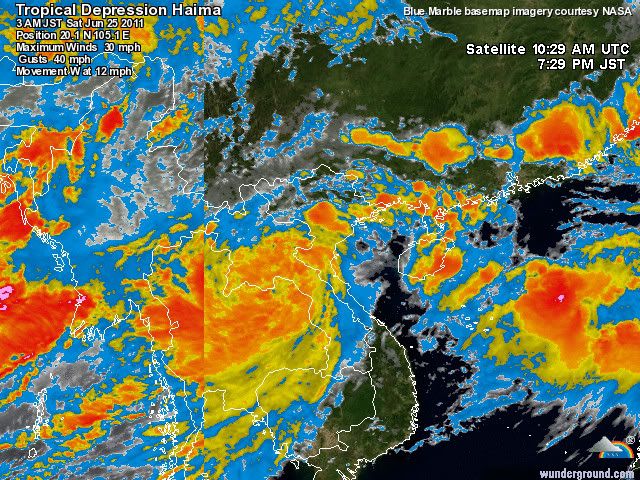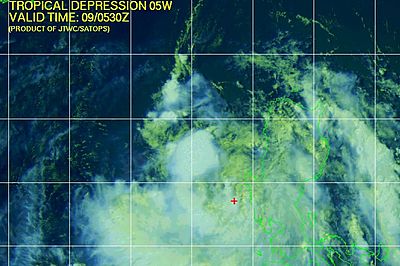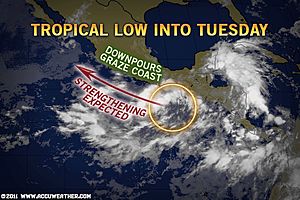

Welkom! Hier alweer het volgende deel in de reeks Hurricane Season! Alle informatie over het ontstaan van nieuwe orkanen in 2011 vind je hier. En natuurlijk volgen we ze allemaal op de voet! Voor zowel Atlantische, Indische als Pacifische stormen kan je hier terecht
Algemene Info
Met de term 'Hurricane Season' bedoelden we in eerste instantie de periode van 1 juni tot 30 november. Deze periode wordt in de Atlantische Oceaan en de Golf van Mexico gezien als het orkaanseizoen. Echter komen deze gewelddadige stormen overal in de wereld voor en met name in Azië zorgen ze jaarlijks voor duizenden slachtoffers en tienduizenden daklozen. Echter horen we vaak erg weinig over de stormen in Azië en juist meer over die in de VS en de Caribbean.
In de laatste jaren zijn Tropische Stormen meer en meer in de media gekomen. Het lijkt ook alsof ze meer en meer slachtoffers maken. Een documentaire over Hurricane Andrew uit 1992, heeft diepe indruk gemaakt en ook zullen kenners orkanen Floyd, Gilbert, Stan en Ivan zich zeker nog herinneren. De catastrofe die "Katrina" met zich meebracht ging de hele wereld over. En dan praten we eigenlijk alleen over de Atlantische stormen en lijken we te vergeten dat er in 2007 meer dan 4000 doden vielen in Bangladesh door orkaan Sidr en orkaan Nargis zorgde voor 80.000 doden in Myanmar alleen al.
Hoewel het Atlantische seizoen pas officieel in juni begint zijn er op andere plekken in de wereld zeker meer orkanen te vinden in de komende maanden. We zullen ook deze dus zeker gaan bespreken. Waarschijnlijk zal de kern van de discussie en de posts gaan over de periode 1 juni tot 30 november. T.z.t. zal er ook wel een NWS-topic worden geopend als een orkaan ook uitgebreid in het nieuws komt.
Orkanen: Hoe ontstaan ze eigenlijk?
Op de site van Wikipedia kan je in het Nederlands nalezen hoe ze ontstaan en wat de belangrijkste energiebron is voor hun verwoestende kracht: het warme zeewater

Ook de BBC heeft er een interessante en leuke animatie over gemaakt.
Ook wordt er op LiveScience in het engels prima uitgelegd hoe ze ontstaan en zich ontwikkelen
Indeling, Kracht en Stormvloed
De stormen worden ingedeeld op 'categorie'. Vaak zijn het eerst tropische stormen" (Tropical Depression, Tropical Storms), die overgaan tot Orkaanstatus (Hurricanes/Tyfoons) Ze worden ingedeeld op windsnelheden via de Saffir-Simpson Schaal.
Door de enorme windkracht van een orkaan wordt het zeewater opgestuwd. Dit zeewater wordt als het ware vooruit geblazen, voor de storm uit. Hoe zwaarder de orkaan des te meer zeewater vooruit wordt geduwd. De stormvloed wordt dan ook gemeten bovenop de reguliere golfslag. Je kan het enigszins vergelijken met een muur van water (tsunami) die vooruit wordt geduwd.
Tropische Depressie: windsnelheden van 38 tot 61 km/u
Tropische Storm: windsnelheden van 62 tot 118 km/u
Orkaan 1e categorie: windsnelheden van 119 tot 153 km/u en een stormvloed van 1 tot 1,5 meter boven normaal
Orkaan 2e categorie: windsnelheden van 154 tot 177 km/u en een stormvloed van 1,5 tot 2,5 meter boven normaal
Orkaan 3e categorie: windsnelhden van 178 tot 209 km/u en een stormvloed van 2,5 tot 3,7 meter boven normaal
Orkaan 4e categorie: windsnelheden van 210-249 km/u en een stormvloed van 3,8 tot 5,5 meter boven normaal
Orkaan 5e categorie: windsnelheden > 250 km/u en een stormvloed van meer dan 5,5 meter boven normaal
Onderstaand schema geeft de kracht en benaming van orkanen overal ter wereld weer

TIP: Interactief (film)overzicht van de krachten van orkanen n.a.v. de schaal van Simpson
Waarom hebben orkanen namen?
De Tropische Depressies worden overal ter wereld in de gaten gehouden en zodra de depressies uitgroeien tot orkaan of cycloon, wordt er een naam aan de storm gegeven. Sinds 1950 krijgen ze namen op alfabetische volgorde (met uitzondering van de letters Q, U, X, Y en Z). Mocht een orkaan vernietigend hebben huisgehouden zoals Floyd, Gilbert en bijv. Katrina, dan zal die naam worden vervangen. Soms komt het ook voor dat alle letters van het alfabet gebruikt zijn in één seizoen (zoals 2005), dan zal een volgende storm Alpha gaan heten, gevolgd door Beta etc etc. Voor het orkanenseizoen 2010 zijn de namen als volgt:
Atlantische Stormen 2011
Arlene, Bret, Cindy, Don, Emily, Franklin, Gert, Harvey, Irene, Jose, Katia, Lee, Maria, Nate, Ophelia, Philippe, Rina, Sean, Tammy, Vince, Whitney
In het Noordoosten van de Pacific ontstaan ook orkanen. Deze orkanen zorgen vaak voor overlast in Midden-Amerika en delen van Mexico.
Oost Pacifische Stormen 2011
Adrian, Beatriz, Calvin, Dora, Eugene, Fernanda, Greg, Hilary, Irwin, Jova, Kenneth, Lidia, Max, Norma, Otis, Pilar, Ramon, Selma, Todd, Veronica, Wiley, Xina, York, Zelda
Verder zijn er dan nog de stormen in het Noordenwesten, Midden en Zuiden van de Pacific. Daar worden ze tyfoons en/of cyclonen genoemd. Vooral de stormen in het Noord/Westen komen vaak in het nieuws omdat ze Japan, de Filippijnen, Taiwan en China vaak teisteren, maar ook geheel Zuid Oost Azië kunnen treffen. Ook in de Indische oceaan komen ze voor, daar zijn vaak Bangladesh en Myanmar aan de beurt, maar soms ook India, Pakistan of zelfs Oman.
Meer informatie over de namen van orkanen vind je hier.
Leuk hoor allemaal, maar wanneer zijn die orkaanseizoenen nou precies?
ATLANTISCHE OCEAAN: 1 juni t/m 30 november
NOORD OOST PACIFIC:Begin mei t/m begin november, met piek in augustus/september
NOORD WEST PACIFIC: Begin juli t/m eind november, maar eigenlijk hele jaar door activiteit.
NOORD INDISCHE OCEAAN: april t/m december met pieken in mei en november
ZUID INDISCHE + WEST AUSTRALISCHE OCEAAN: oktober t/m mei met pieken in februari en april
ZUID WEST PACIFIC + OOST AUSTRALISCHE OCEAAN: oktober tot eind april met piek in februari.
Over het algemeen is Mei de rustigste maand en September de zwaarste.
En? Zijn er al verwachtingen en/of voorspellingen voor 2011?
Begin december kwamen de eerste voorspellingen voor 2011 naar buiten. Ze verwachten wederom een zeer actief seizoen. 50 jaar orkaangeschiedenis heeft een zogenaamd gemiddeld orkaanseizoen gecreëerd. Namelijk: 9,6 stormen met naam, 5,9 groeit uit tot orkaan en 2,3 worden superorkanen (cat 4 of 5) Volgens de december verwachting krijgen we 17 tropische stormen in de Atlantische Oceaan. Negen groeien daarvan uit tot orkaan en vijf daarvan zullen superorkanen worden. Er is een kans van 73% dat één van deze 5 superorkanen de kust van de VS zal gaan treffen. Deze voorspelling kan je hier nog eens nalezen.
Waait het nou echt zo hard bij zo'n orkaan?
Oude Delen
2004 - Deel 1 en Deel 2
2005 - Deel 1 en Deel 2
2006 - Deel 1 en Deel 2
2007 - Deel 1, Deel 2, Deel 3 en Deel 4
2008 - Deel 1 en Deel 2
2009 - Deel 1 en Deel 2
2010 - Deel 1 , Deel 2 . Deel 3 en Deel 4
Enkele Links
1. National Hurricane Centre
2. Carribean Storm Network
3. Hurricanezone
4. Hurricane Track
5. Website met satelietbeelden van de Caribbean en de rest van Amerika
6. Intellicast: Geavanceerde satellietfoto's en gifs van aktuele stormen
7. Tropical Weather Underground
8. Tropical Storm Risico's van dit moment
9. Wikipedia Hurricanes/Tyfonen in het algemeen
10. Alle stormen ter wereld van de laatste jaren in overzicht
11. The StormTrack
12. Orkanensite in de Filipijnen
13. Atlantische Orkanensite
14. Actuele orkanen in Australië en De orkaanindeling in Australië
15. Tropische weersite omgeving Australië
16. Mooie site over Orkanen aan de VS kusten
17. Website van NASA over Hurricanes
Opmerkelijke Wikipedia-Links
-- Hurricane Katrina 2005
-- Cyclone Nargis 2008
-- Hurricane Season 2011 - Wikipedia
-- Hurricane Season 2010 - Wikipedia
-- Hurricane Season 2009 - Wikipedia
-- Hurricane Season 2008 - Wikipedia
-- Hurricane Season 2007 - Wikipedia
-- Hurricane Season 2006 - Wikipedia
-- Hurricane Season 2005 - Wikipedia
-- Hurricane Season 2004 - Wikipedia
Actuele Weerradar in Golf van Mexico

Actuele Water temperatuur.

=====================
Heb je informatie over orkanen of wil je gewoon alle orkanen van 2011 volgen, volg dan dit topic
[ Bericht 0% gewijzigd door Frutsel op 15-02-2011 21:26:15 ]
Voor 2011 voorspellen ze nu een zeer agressief orkaanseizoen
Lees hier meer over deze voorspellingquote:CSU and TSR predict an extremely active 2011 Atlantic hurricane season
A continuation of the pattern of much above-average Atlantic hurricane activity we've seen since 1995 is on tap for 2011, according to the latest seasonal forecast issued Wednesday by Dr. Phil Klotzbach and Dr. Bill Gray of Colorado State University (CSU). They are calling for 17 named storms, 9 hurricanes, and 5 intense hurricanes. An average season has 10 - 11 named storms, 6 hurricanes, and 2 intense hurricanes. The new forecast is a very aggressive one, since only six seasons since 1851 have had as many as 17 named storms; 19 seasons have had 9 or more hurricanes. The 2011 forecast calls for a much above-average chance of a major hurricane hitting the U.S., both along the East Coast (49% chance, 31% chance is average) and the Gulf Coast (48% chance, 30% chance is average). The Caribbean is forecast to have a 62% chance of seeing at least one major hurricane (42% is average.) Five years with similar pre-season November atmospheric and oceanic conditions were selected as "analogue" years that the 2011 hurricane season may resemble: 2008, 1999, 1989, 1961, and 1956. The average activity for these years was 12 named storms, 7 hurricanes, and 4 major hurricanes.
The forecasters cited several reasons for their forecast of a much above-average season:
1) Unusually warm sea surface temperatures continue in the tropical Atlantic this fall, an indication that the active hurricane period we have been in since 1995 will continue (in technical terms, the positive phase of the Atlantic Multidecadal Oscillation, AMO, will continue.) SSTs in Atlantic Main Development Region (MDR) for hurricanes, from the Caribbean eastwards to the coast of Africa, were at a record high in October (November data are not yet available.)
2) Hurricane activity in the Atlantic is lowest during El Niño years and highest during La Niña or neutral years. This occurs because El Niño events tend to increase westerly upper-level winds over the tropical Atlantic, bringing high wind shear harmful for hurricanes. The CSU team notes that we are currently experiencing moderate to strong La Niña conditions, with an unusual amount of cool water present in the top 300 meters of the Equatorial Pacific Ocean off the coast of South America. Since 1979, only eight years have had similar amounts of cool water in November. The hurricane seasons that followed each of those eight years were unable to transition to El Niño conditions. Thus, the CSU team expects that we will have neutral or La Niña conditions in place for the Atlantic hurricane season of 2011, which should act to keep wind shear values average to below average, enhancing hurricane activity. Of the 16 El Niño/La Niña computer models that made November predictions for the July-August-September 2011 portion of hurricane season (Figure 1), only 4 (25%) predicted that El Niño would arrive.
2011 Atlantic hurricane season forecast from Tropical Storm Risk, Inc.
The British private forecasting firm Tropical Storm Risk, Inc. (TSR), issued their 2011 Atlantic hurricane season forecast on Monday. They are also calling for a very active year: 15.6 named storms, 8.4 hurricanes, and 4 intense hurricanes. TSR predicts a 66% chance of an above-average hurricane season, 22% chance of a near-normal season, and only a 12% chance of a below normal season. TSR bases their December forecast on predictions that sea surface temperatures next fall in the tropical Atlantic will be above about 0.3°C above average, and trade wind speeds will be about 0.7 m/s slower than average. The trade wind speed prediction is based on a forecast for a weak La Niña in August-September 2011.
I like how TSR puts their skill level right next to the forecast numbers: 2% skill above chance at forecasting the number of named storms, 1% skill for hurricanes, and 7% skill for intense hurricanes. That's not much skill, and really, we have to wait until the June 1 forecasts by CSU, NOAA, and TSR to get a forecast with reasonable skill.
Met dank aan: Onweer-Onlinequote:Wederom een druk orkaanseizoen verwacht
Het Atlantisch orkaanseizoen van 2011 zal na verwachting net zo druk gaan verlopen als in 2010, dat hebben meteorologen van het Colorado State University bekend gemaakt. Er wordt verwacht, dat er 17 tropische stormen gaan ontstaan waarvan er negen zullen uit groeien tot orkaan. Vijf van de negen orkanen zullen uitgroeien tot "major hurricane" van categorie 3 of hoger, met windsnelheden van minstens 178 km per uur of hoger. Het Atlantisch orkaanseizoen loopt van 1 juni tot en met 30 november.
Vorig orkaanseizoen kwamen er 19 tropische stormen voor, waarvan er 12 uitgroeiden tot orkaan. Van deze twaalf orkanen kregen er vijf de status major hurricane. Het orkaanseizoen van 2010 staat op de derde plaats wat betreft de activiteit, alleen in de jaren 1887 en 1995 werden er meer stormen geregistreerd. In een gemiddeld orkaanseizoen brengt ongeveer elf stormen voort. Zes hiervan bereiken orkanen status. Twee orkanen groeien uit tot major hurricane in de Atlantische Oceaan, het Caribisch gebied en de Golf van Mexico.
Boven de Atlantische Oceaan, de Caribische Zee en de Golf van Mexico komen tijdens El Niño gemiddeld minder orkanen voor in tegenstelling tot de periode van La Niña, waarin er meer orkanen onstaan. Aan de westkust van Mexico en de Verenigde staten komen bij El Niño juist meer orkanen aan land. Men verwacht, dat het onwaarschijnlijk is, dat er een El Niño zich zal gaan ontwikkelen. Dit houdt in, dat er een actief orkaanseizoen aan zit te komen, aldus Philip Klotz, hoofd van Colorado State Universiteit.
Er is een grote mate van onzekerheid in de prognoses, maar meteorologen zijn nauwkeuriger geworden in het analyseren van grootschalige patronen en het voorspellen van een orkaanseizoen. Dit kan nuttig zijn voor het bedrijfsleven waaronder verzekeraars, boeren en energiemaatschappijen, die getroffen kunnen gaan worden door orkanen.
Op korte termijn zijn de weerpatronen bepalend, net zoals afgelopen jaar. Niemand voorzag, dat de droge lucht massa's en de straalstroom ervoor zorgden, dat de stormen en orkanen zich verwijderden van het vaste land van de Verenigde Staten. Vorig haar heeft geen enkele van de 12 gevormde orkanen de kust van de Verenigde Staten bereikt, waardoor de inwoners voor grote rampen bespaard zijn gebleven. Gemiddeld komt één op de vier orkanen aan land. Dit jaar verwachten de meteorologen, dat enkele orkanen wel het vaste land gaan bereiken.
quote:En natuurlijk volgen we ze allemaal op de voet! Voor zowel Atlantische, Indische als Pacifische stormen kan je hier terecht

bronquote:Zes cyclonen
De ellende is nog lang niet voorbij in Australië. In Queensland vrezen specialisten dat het stormseizoen nog een grote cycloon in petto heeft. Het seizoen duurt nog drie maanden en dus zou er nog veel neerslag uit de lucht kunnen vallen. Zeker tot woensdag zal het waterniveau blijven stijgen.
In november hadden weerkundigen een seizoen met zes cyclonen voorspeld
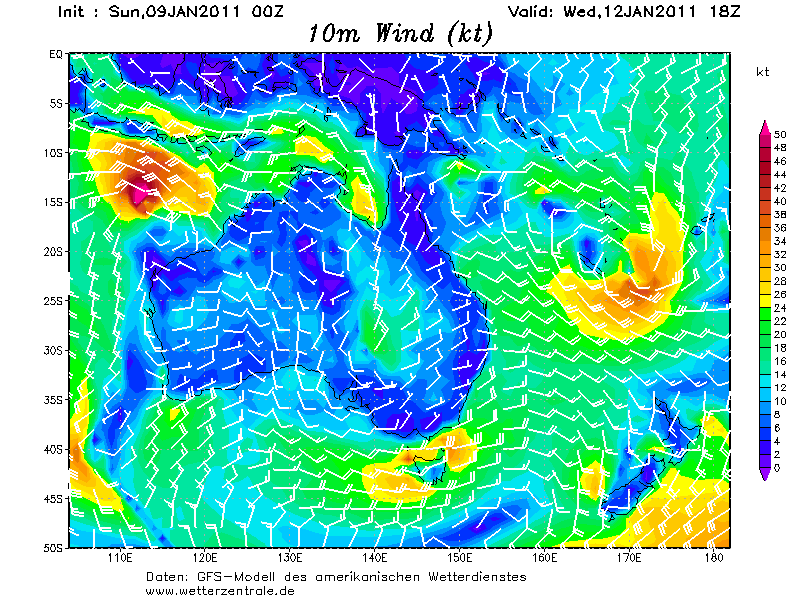
Ook aan de oostkant van van Australie lijkt er een storm te ontstaan. Deze trekt niet richting land (niet richting Australie in ieder geval)
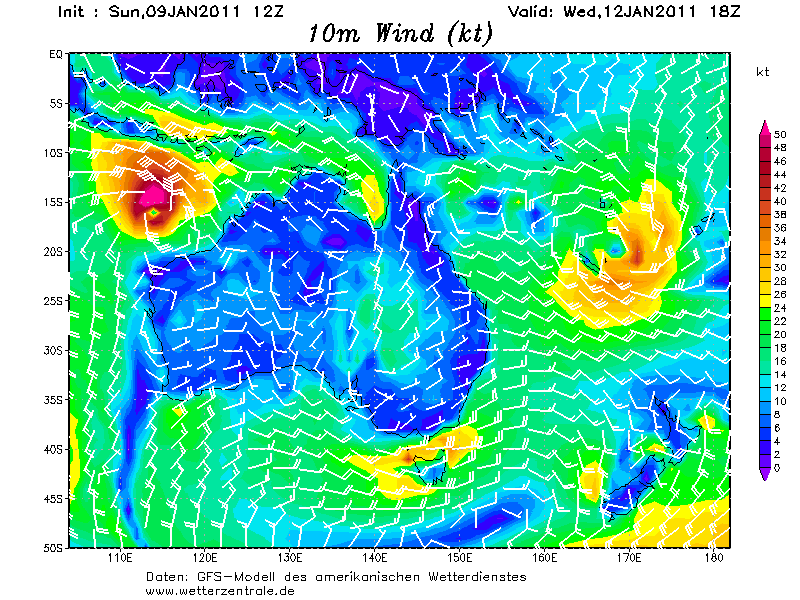

quote:Tropical disturbance NE of Vanuatu now upgraded to FAIR by JTWC. Forecast to be slow moving, big rain threat for New Caledonia and Vanuatu!
quote:At 9am Monday another low was located near 15S 112E and was nearly stationary.
This low is currently in an unfavourable environment but conditions for
development are likely to improve by Wednesday.
Likelihood of this system being a tropical cyclone in the Western Region:
Tuesday :Low
Wednesday :High
Thursday :High

De orkaanschaal in Australie is net iets anders dan de schaal die we normaal gebruiken.

Of zal die nog meer ellende veroorzakenquote:Op dinsdag 11 januari 2011 16:29 schreef Frutsel het volgende:
Gaat die dan die bosbranden daar blussen?
quote:At 8am WST Tuesday a low [09U] was located near 14.9S 108.3E and was moving west
at 19 kilometres per hour. This low is likely to develop into a tropical
cyclone on Wednesday, by which time it will be tracking eastwards towards the
Pilbara coast. It is not expected to affect the coast on Wednesday or Thursday.
Likelihood of this system being a tropical cyclone in the Western Region:
Wednesday :High
Thursday :High
Friday :High
Misschien wordt het dit jaar toch een actief seizoen?

quote:Tropical Cyclone Vania may hit New Zealand
A tropical cyclone may be heading for New Zealand as a tropical depression continues to deepen.
According to WeatherWatch.co.nz, the tropical depression is currently lying over warm waters between Vanuatu and New Caledonia.
And the conditions are favourable for it to become a tropical cyclone, with New Caledonia likely to take a direct hit.
"A direct hit to New Zealand is not out of the question,” says head weather analyst Philip Duncan.
He says the storm may have an impact on the upper half of New Zealand.
"We still have no clear path on where this tropical storm will track but the North Island does look as though it will be in its sights.
"One model shows the low drifting across the North Island from the Taranaki region, while the other two models favour a Northland or East Cape strike.
“It's possible there's a fourth option where the low is pushed further east of the country, but either way it's something we should be aware of,” says Mr Duncan.
On the up side, Mr Duncan says heavy rain appears to be the main feature with this low, which may bring much needed water to dry parts of the North Island, but potentially a wet and windy time for campers in Northland and Coromandel Peninsula.
"The low is likely to start impacting New Zealand at the weekend. It's too early to be sure of its exact path so we advise people to keep up to date with WeatherWatch.co.nz news updates over the coming days.”
Mr Duncan says there is currently a moderate chance of New Zealand being impacted by the low.
quote:WA operators on Cyclone alert
Tropical cyclone Vince is headed towards Australia's north-west coast, home to some of the country’s largest oil and gas facilities.
The weather bureau said the cyclone was currently 1050 km north-west of the town of Exmouth and is expected to move south-east for the next 48 hours and then curve back to the south-west, moving parallel to the coast.
Much of Australia's offshore oil and gas production, including the A$20 billion (US$19.742 billion) North West Shelf liquefied natural gas export project operated by Woodside , are located off the north-west coast.
Apache Energy is currently monitoring the cyclone movement, which may approach Apache facilities in the area over the next two to three days, but has taken no further action, Reuters reported.
Woodside said that it was preparing its facilities, but that there was currently no impact to production.
Woodside, Apache Energy, and BHP Billiton have all been forced to shut offshore operations as a precaution for brief periods since the beginning of the current cyclone season.
Cyclones off Australia's north-west annually force offshore oil and gas platforms to shut down temporarily.
Australia is facing almost double the usual number of destructive tropical cyclones, possibly as many as 22, during the current cyclone season, the weather bureau said in October.
The largest increase in cyclones is expected off the north-west, with 11-12 cyclones predicted, compared with an average of seven.
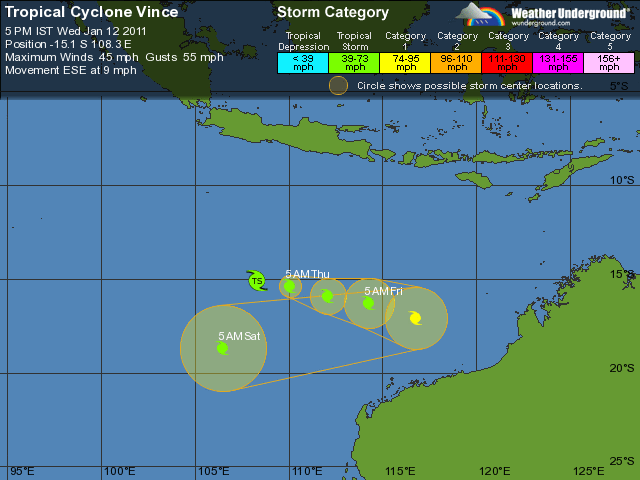
[ Bericht 22% gewijzigd door #ANONIEM op 12-01-2011 19:00:37 ]
De cycloon trekt nu richting Nieuw-Caledonië (227.436 inwoners)


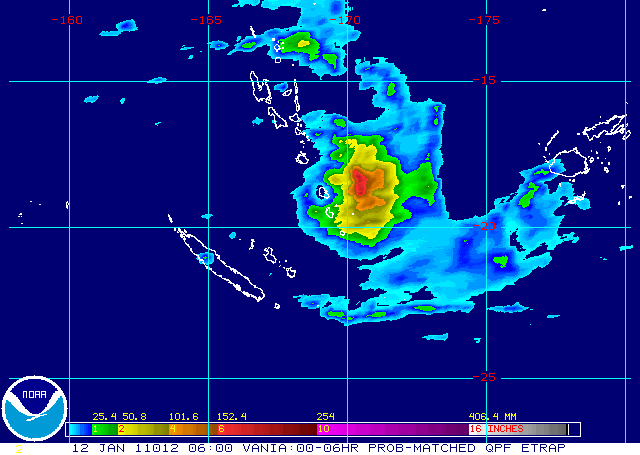
Eh, is de definitie van "een bovengemiddeld orkaanseizoen" dat de USA vaak getroffen dient te worden? Lijkt me niet.quote:Op donderdag 6 januari 2011 18:55 schreef Frutsel het volgende:
Interessant... voor 2010 werd een boven gemiddeld orkaanseizoen voorspeld... toch leek dat eigenlijk niet zo, want de US werd zo goed als niet getroffen, maar toch waren er aardig wat stormen.
Dat de USA afgelopen jaar niet vaak geraakt is komt door heersende windstromingen en niet doordat er weinig orkanen of stormen waren, imho.
NOAA noemt 2010 zelfs een extreem druk Atlantisch orkaanseizoen...
Daarom zeg ik ook "het leek van niet"... want we hebben er niet veel over gehoord in de media, juist omdat er nauwelijks landfall was.quote:Op woensdag 12 januari 2011 19:57 schreef cynicus het volgende:
[..]
Eh, is de definitie van "een bovengemiddeld orkaanseizoen" dat de USA vaak getroffen dient te worden? Lijkt me niet.
Dat de USA afgelopen jaar niet vaak geraakt is komt door heersende windstromingen en niet doordat er weinig orkanen of stormen waren, imho.
NOAA noemt 2010 zelfs een extreem druk Atlantisch orkaanseizoen...
Daarbij komt dat er wel bovengemiddelde verwachtingen waren, dus ook voor eventuele landfall in de VS of de Carribean.
Two tropical cyclones are churning the tropical waters of the Southern Hemisphere as of Wednesday.
Tropical Cyclone Vania has spun up near the South Pacific island nation of Vanuatu. The center was within 125 miles, or 200 km, of Port-Vila, Vanuatu.
Having highest sustained winds of 50 mph, Vania was nearly stationary with a sluggish drift towards the southwest.

Cyclone Vania on Jan. 12, 2011. (Navy Research Lab Monterey).
Vania's greatest threat, rather than Vanuatu, is to the island of New Caledonia, which it could strike directly with hurricane gusts and flooding rain as early as Friday.
Meanwhile, far to the west, Tropical Cyclone Vince whirls over open seas well off northwestern Australia.
The location of Vince is about 750 miles, or 1200 km, west-northwest of Port Hedland, Australia.

Cyclone Vince on Jan 12, 2011 (Navy Research Lab Monterey).
Vince holds highest sustained winds of 45 mph, and the storm is tracking a little south of east at 8 mph.
Warm waters will help to promote strengthening of this tropical cyclone as it heads towards the east through Friday. Thereafter, movement is less certain and could shift substantially.
Much of the northwest coast of Australia is sparsely settled. However, there are important mineral loadings sites and off-shore petroleum production sites that could be adversely affected by a tropical cyclone.
Bron: Accuweather
[ Bericht 1% gewijzigd door #ANONIEM op 12-01-2011 22:16:01 ]
quote:New Caledonia on cyclone alert
New Caledonia's Loyalty Islands were on maximum alert for Cyclone Vania after it brought gale-force winds to Vanuatu.
The New Caledonian domestic airline grounded all flights until further notice.
The category 2 storm damaged food crops and small buildings in Vanuatu.
The weather bureau said it received widespread reports of low-level damage but communication with some islands, including Tanna, was cut after a phone tower was blown over.
New Caledonian officials say it could bring winds of up to 110 kilometres an hour to the Loyalty Islands and to the main island later.
Low-lying areas have been evacuated, businesses and schools are closed, and residents have been warned to take shelter and avoid coastal areas.

quote:SITUATION
At 1200 UTC a Tropical Low was centred within 60 nautical miles of
latitude thirteen decimal five south (13.5S)
longitude one hundred and forty nine decimal six east (149.6E)
Recent movement : north northwest at 6 knots
Maximum winds : 30 knots
Central pressure: 997 hPa
The low may develop into a tropical cyclone during the next 24 hours.
AREA AFFECTED
Within 60 nautical miles of the centre.
FORECAST
Clockwise winds 15/25 knots, increasing to 25/35 knots over the northern half.
Very rough seas developing.
Forecast positions
At 0000 UTC 14 January: Within 150 nautical miles of 13.2 south 150.8 east
Central pressure 995 hPa.
Winds to 35 knots near centre.
At 1200 UTC 14 January: Within 180 nautical miles of 14.4 south 152.1 east
Central pressure 989 hPa.
Winds to 40 knots near centre.
Neerslag komt op sommige plaatsen boven de 150 mm
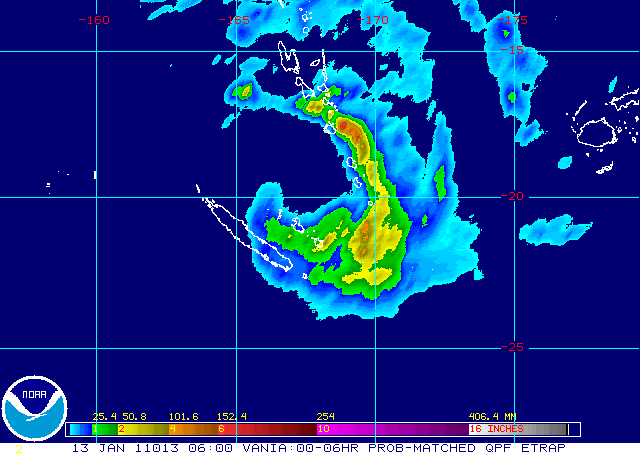
Nog eentje op weg naar het noordelijke eiland van Nieuw Zeeland?
En een historisch lijstje (interessante link trouwens):
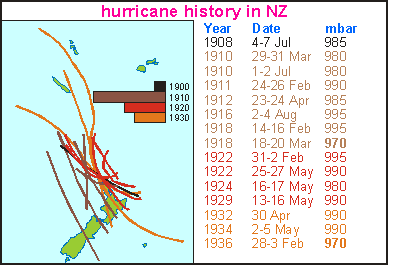
Maar goed, er kan nog zoveel gebeuren voordat die storm/orkaan daar is.
Nieuw Caledonie komt ook weer dicht in de buurt voor deze cycloon.
[ Bericht 14% gewijzigd door #ANONIEM op 14-01-2011 19:16:09 ]
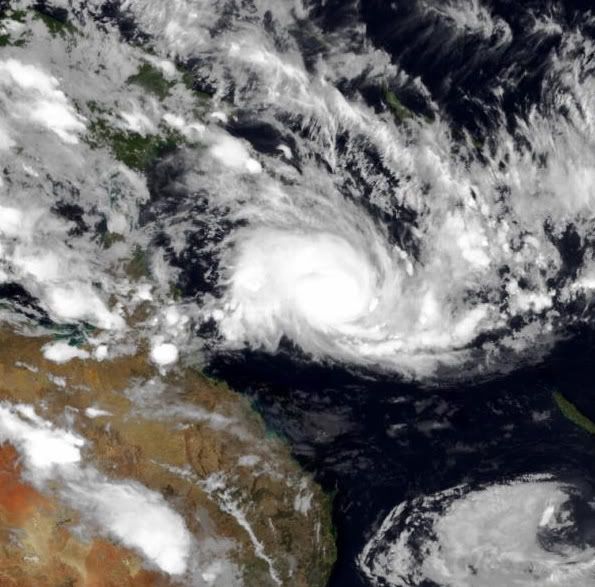
ABC Newsquote:Norfolk Island spared cyclone's wrath
Norfolk Island has been spared the full force of Tropical Cyclone Zelia, which is now moving to the east of the island.
Earlier, it was predicted to move directly across the island but it is currently about 60 kilometres to the north-east and is rapidly moving further off shore.
The weather bureau says it has been downgraded to a category two cyclone and is unlikely to cause any significant damage.
The bureau says winds could reach gale force in the next few hours and seas could rise up to seven metres.
Vania
[ Bericht 37% gewijzigd door Frutsel op 17-01-2011 22:44:46 ]

Wilma ligt nu boven de Samoa eilanden en zal koers zetten richting de Tonga eilanden.


[ Bericht 9% gewijzigd door #ANONIEM op 23-01-2011 14:08:54 ]
quote:Existing Cyclones in the Eastern Region:
Tropical Cyclone Anthony is moving east in the northern Coral Sea and slowly
strengthening. Likelihood of TC Anthony remaining a tropical cyclone in Eastern
Region on:
Monday: High
Tuesday: High
Wednesday: High
quote:Potential Cyclones:
At 8am WST a tropical low was located just off the Kimberley coast near latitude
14.3S longitude 128.8E, about 75 kilometres west of Port Keats, moving north at
6 kilometres per hour. The low is expected to move in a generally westwards
direction and be in the Western region [west of 125E] just off the Kimberley
coast on Tuesday. During the week the low is expected to move towards the
southwest parallel to the Pilbara coast. The low may develop into a tropical
cyclone late on Tuesday or more likely on Wednesday.
Likelihood of this system being a tropical cyclone in the Western Region:
Monday :Low
Tuesday :Moderate
Wednesday :High
[ Bericht 52% gewijzigd door #ANONIEM op 23-01-2011 16:02:35 ]
en volgens dat plaatje wordt het wel iets meer dan een Cat 1quote:Op zondag 23 januari 2011 13:31 schreef aloa het volgende:
Anthony gaat rechtsomkeer maken en lijkt (volgens GFS) over een aantal dagen aan land te gaan in het noorden van Queensland. Wat voor nieuwe overstromingen kan gaan zorgen.
[ afbeelding ]
Wilma ligt nu boven de Samoa eilanden en zal koers zetten richting de Tonga eilanden.
[ afbeelding ]
[ afbeelding ]


quote:Existing Cyclones in the Eastern Region:
Tropical Cyclone Anthony is moving east southeast over the central Coral Sea.
Likelihood of Tropical Cyclone Anthony remaining as a cyclone in the Eastern
Region on:
Tuesday: Moderate
Wednesday: Moderate
Thursday: Moderate
quote:Wilma has hit American Samoa
Tropical Cyclone Wilma has hit American Samoa and triggered alerts in other island countries in the central South Pacific, Radio New Zealand International reported on Monday.
American Samoa's Emergency Center said the Category 1 storm has winds of up to 110 km/h and gusts in excess of 130 km/h.
The storm has hit eastern villages, downing power lines, and is due to sweep over the western island of Tutuila.
So far there have been some landslides and debris on the road reported, as well as minor damage to some roofs and houses.
A marine warning said there was a hazardous surf up to 5 meters high throughout the storm, causing some flooding.
Pago Pago International Airport is still closed and it's not clear when inter island flights can resume.
American Samoa Governor, Togiola Tulafono, has activated the Emergency Operations Center, bringing together ten government agencies for a coordinated response.
As the cyclone heads south, it will also affect Samoa's main island, Upolu.
An alert is also in place for Tonga's northern islands.
For Tokelau, an alert is still in force, but winds there are expected to ease.

quote:A Tropical Cyclone Advice [IDW24100] is current for a developing tropical low.
At 8am WST Monday a tropical low was located over the north Kimberley near
latitude 14.7S longitude 127.1E, about 65 kilometres southeast of Kalumburu,
moving west at 16 kilometres per hour. Please refer to the latest Advice. The
low is expected to move in a generally westwards direction and be in the Western
region [west of 125E] just off the Kimberley coast on Tuesday. During the week
the low is expected to move towards the southwest parallel to the Pilbara coast.
The low may develop into a tropical cyclone late on Tuesday or more likely on
Wednesday.
Likelihood of this system being a tropical cyclone in the Western Region:
Tuesday :Moderate
Wednesday :High
Thursday :High
[ Bericht 6% gewijzigd door #ANONIEM op 24-01-2011 19:11:25 ]
Accuweatherquote:Tropical Cyclone Brings Heavy Rain to Western Australia
A tropical cyclone will continue to affect northwestern Australia over the next few days. The cyclone formed Sunday over the Timor Sea and quickly moved inland across the Kimberley area of Western Australia. It is expected to reemerge offshore, gain strength, and brush much of the northern coast of Western Australia over the next few days.
Heavy rainfall has affected areas along the track of the cyclone. Kalumburu had 6.42 inches Monday, and Theda had nearly 7 inches.
The cyclone is maintaining good organization despite being over land. It will emerge back into the Indian Ocean early Tuesday, local time. It should quickly gain tropical storm strength, then parallel the Kimberley coast through Wednesday. Tropical storm conditions are most likely in the communities of Beagle Bay, Cape Leveque, and Kuri Bay. Tropical storm conditions are possible in the towns of Port Hedland and Exmouth Wednesday and Thursday.
Port Hedland is Australia's busiest port. It serves as an export point for iron ore, and other minerals mined across Western Australia. However, Port Hedland should not suffer a direct hit by the cyclone.
Fortunately, Western Australia has been spared the devastating flooding that has affected much of the rest of the country.
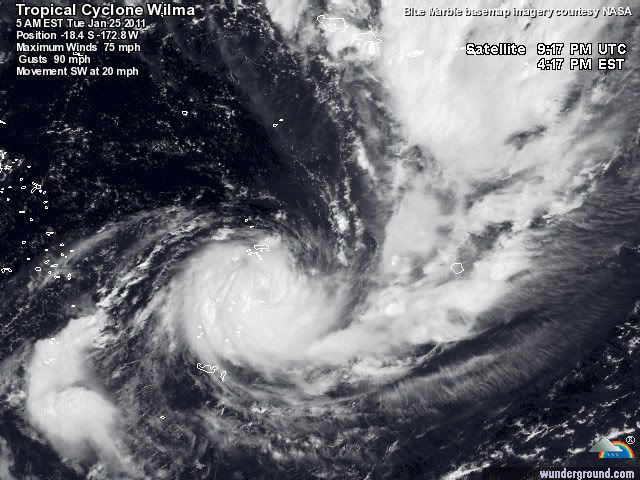
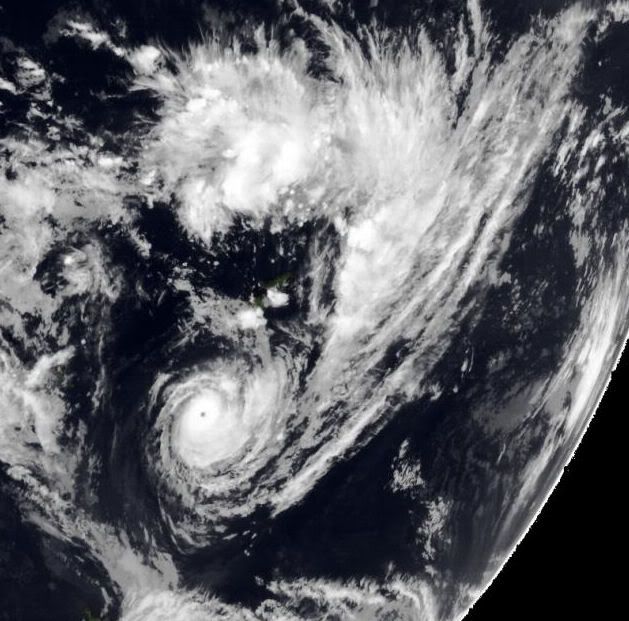
Bianca heeft een windsnelheid van 104 km/uur met windstoten tot 128 km/uur. Bianca trekt langs de westkust van Australie en zal (nu nog tropische storm) in kracht toenemen tot categorie 1 en daarna categorie 2
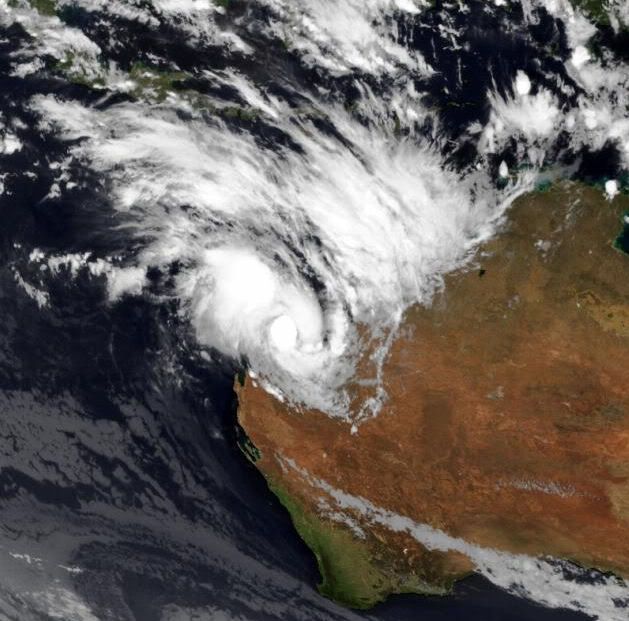
Windsnelheid van 209 km/uur met windstoten tot257 km/uur
[ Bericht 14% gewijzigd door #ANONIEM op 26-01-2011 09:41:52 ]

Weer een cycloon voor Nieuw Caledonie? (en misschien voor Australie)

[ Bericht 7% gewijzigd door #ANONIEM op 26-01-2011 15:07:20 ]
quote:Tropical Cyclone activity heats up near Australia
The year's first Category 4 tropical cyclone is Tropical Cyclone Wilma, which is churning the waters near Tonga in the Southern Hemisphere with sustained winds of 135 mph (minimum Category 4 strength.) Wilma passed over American Samoa as a strong tropical storm, and hit Tonga as a Category 3 storm. Substantial damage has been reported on Tonga, but no deaths or injuries. Wilma is recurving out to sea, and will not affect Australia.
Australia is keeping an eye on Tropical Cylone Bianca, which is expected to skirt the northwest coast of the country over the next few days. Of much greater concern for Australia are two potential tropical cyclones that could hit the flood-ravaged state of Queensland next week. Both the European Center and GFS models predict that the remains of Tropical Cyclone Anthony will regenerate into a tropical storm late this week and hit Queensland early next week. A second and potentially more powerful storm is forecast to form next week in the islands to the east of Australia, and threaten Queensland at the end of the week. This is potentially terrible news for Australia, which is attempting to recover from record floods. As reported in the latest Bureau of Meteorology climate statement and flood summary, the past four months (September - December) have been the rainiest such period in Queensland's history, and the resulting flooding disaster has been Australia's most expensive natural disaster in history.
Het lijkt er inderdaad op dat Anthony weer tot leven komt en zo'n beetje hetzelfde gebied in trekt waar de vorige tropische storm (Tasha) voor het begin van de overstromingen zorgde. En volgende week nadert waarschijnlijk nog een cycloon.quote:
restanten anthony kaartje 30 januari
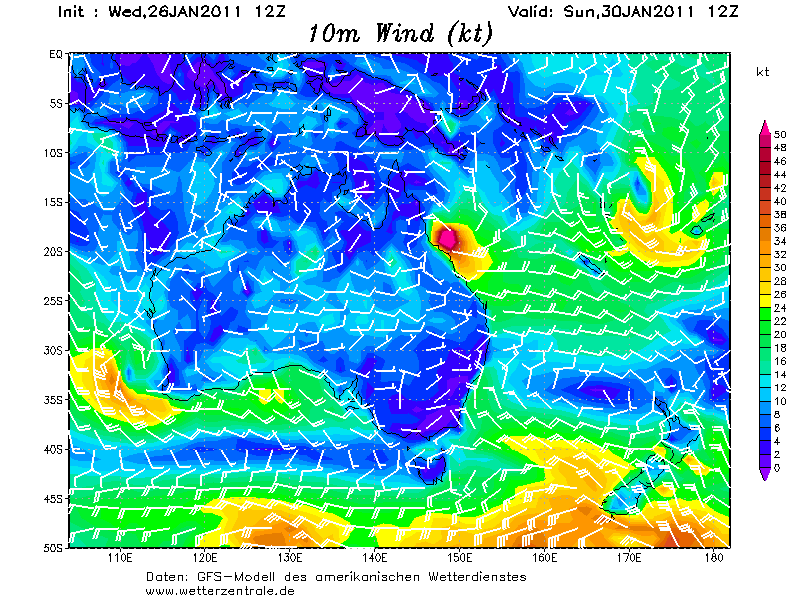
cycloon voor volgende week 3 februari


Bianca

Wilma is met een windsnelheid van 185 km/uur en windstoten van 233 km/uur op weg naar Nieuw Zeeland. Wilma is nu een categorie 3 en zal afzwakken tot Tropische storm, als het Nieuw Zeeland bereikt.
Wilma

quote:SITUATION
At 0600 UTC Ex-Tropical Cyclone Anthony was centred within 15 nautical miles of
latitude seventeen decimal four south (17.4S)
longitude one hundred and fifty four decimal eight east (154.8E)
Recent movement : west northwest at 9 knots
Maximum winds : 35 knots
Central pressure: 998 hPa
Ex-Tropical Cyclone Anthony may redevelop into a tropical cyclone during the
next 6 to 18 hours.
quote:Cyclone Wilma to rock north
Parts of the upper North Island are in for a gusty weekend with exceptionally strong winds and possible flooding forecast as a cyclone moves past the country.
Tropical Cyclone Wilma is near New Caledonia and is due here late tomorrow night, the MetService says.
"It should sideswipe the northeastern parts of Northland on Saturday morning, then get pushed off to the southeast and sideswipe Gisborne on Sunday evening. Then it will move way off to the east of us," said MetService weather ambassador Bob McDavitt.
The MetService has issued severe rain warnings for Auckland, eastern Waikato, Coromandel Peninsula, Bay of Plenty and Gisborne for tomorrow morning, saying slips or flooding are possible.
The heaviest rainfall is expected in Northland where 150mm to 200mm may fall within 24 hours. Mr McDavitt said the rain would be accompanied by gales.
"The cyclone has very tight isobars around it which makes the winds very strong."
Weather Watch chief analyst Philip Duncan said the upper North Island might have flooding similar to last Sunday's.
"Because it's a tropical storm it has very, very heavy rain which is not too good for the long weekend. And the winds will be gale force further north which is exceptionally strong ...
"But the good news is that when the winds pick up you know the rain's about to stop."
He said the cyclone would not affect the temperature and he has forecast between 24C and 26C for most of the upper North Island.
"The humidity may increase a little bit, but it won't get as bad as we've had recently."
Mr Duncan said the severe wind and rain would move off the country quickly with the promise of clear weather on Sunday and Monday.
"It's a quite a fast-moving weather system."


Het lijkt er op dat Bianca als tropische storm landfall zal maken in het zuidwesten van Australie, in de buurt van Perth.
quote:Cyclones menace WA, north Queensland
Emergency services are keeping a close eye on three cyclones approaching the coasts of North Queensland and Western Australia's south-west respectively.
Tropical Cyclone Anthony has reformed into a category one system off North Queensland and has turned back towards land.
The weather bureau says the cyclone reformed this morning and is about 950 kilometres north-north-east of Townsville.
Forecaster Greg Connor says it is likely to cross the coast between Cooktown and Mackay sometime early Monday morning.
"We do expect it to intensify. It's probable that it will get to category one or two, but there is the possibility it will get to category three before it gets to the coast," he said.
"The big danger with Anthony is that it's starting to move now towards the coast and we're likely to be putting out a cyclone watch for the coastal listening area for this evening from 5:00pm onwards."
Another system is off Fiji and could hit Queensland as a category four or five cyclone as early as next Thursday.
This system potentially poses the bigger threat to Queensland.
Premier Anna Bligh says she has reactivated the state's disaster management group to deal with the threat.
Ms Bligh also says the associated rain could bring more flooding.
And authorities along the south-west coast of Western Australia are preparing for possible damage from Cyclone Bianca.
The bureau says there is a significant risk that Bianca, a category three system, could maintain tropical cyclone intensity as it approaches the coast early on Sunday.
Forecasters have issued a cyclone watch for areas including Perth, Bunbury and Busselton. The cyclone passed Exmouth overnight, bringing strong winds but no reports of damage.
Wild weather
Bureau regional director Mike Bergin says although Bianca is expected to weaken to a category one system overnight, there will likely be very wild weather on Sunday.
"[There will be] damaging wind gusts to 120 kilometres per hour, so that will see severe to extreme fire danger with the northerly winds," he said.
"We'll be seeing very rough seas, increasing swells, significant wave heights probably up towards four metres. We'll probably see beach erosion as well."
The United States Navy website suggests the cyclone will cross the coast very close to Perth.
Fire and Emergency Services spokesman Allen Gale says the cyclonic activity will bring a mixture of problems.
"One of the big effects is the fire danger weather on Sunday - that will be a very significant, possibly up to a catastrophic [level warning]," he said.
Mr Bergin describes the cyclone as an "evolving story" and says people in the area should keep informed.
"Bianca still has a considerable distance to travel, better than 1,500 kilometres across the Indian Ocean," he said.
"So the uncertainties in the time of arrival are significant but the risk is very high."
The bureau has also warned low-lying coastal areas may be flooded.
But it says Bianca is not expected to be as bad as Cyclone Alby which hit Perth in 1978.
Alby claimed five lives and caused widespread damage in the Perth metropolitan area.
Earlier today a red alert was lifted for Exmouth and Coral Bay as the cyclone headed away from the coast.
Queensland Deputy Police Commissioner Ian Stewart says residents in the danger zone need to be prepared.
"I'd be asking people to think about stocking up on essential items, but there is no need for panic buying," he said.
"Make sure they have fuel in their vehicles, items in their yards and around their houses that could become missiles are put away or tied down."
quote:Rough night ahead for North Islanders
Much of the North Island is in for a night of strong winds and heavy rain as the tail of a cyclone passes over.
And there are severe weather warnings in place.
The low causing the conditions used to be known as tropical cyclone Wilma. It has weakened on its way here, so it is no longer a cyclone. But it is still bringing plenty of rain down across Northland, through Auckland, Waikato and the Bay of Plenty, and out to the East Coast.
Northland has already been getting drenched since this afternoon, and with the ground up there already wet, the heavy rain is bound to cause flooding, although conditions should ease by the morning.
There is also a strong wind warning for eastern areas.
The torrential rain and strong winds are going to carry on throughout the night in Northland, Auckland and in the central and eastern North Island.
Many areas are looking at getting at least 100 millimetres of rain overnight.
These conditions can cause flooding and wind damage, and will certainly make driving conditions dangerous.
Most of the rain should have cleared by tomorrow afternoon, but if the forecasts are correct, there's likely to be a bit of mopping up to do over the weekend.
Ja in Auckland vanmorgen al meer dan 100mm en komt meer aan, had er nog een stukje over geschrevenquote:Op vrijdag 28 januari 2011 11:51 schreef aloa het volgende:
Het noorden van Nieuw Zeeland mag zich gaan opmaken voor de restanten van cycloon Wilma. Vooral de regen zal het grootste probleem gaan worden.
[..]
quote:Op vrijdag 28 januari 2011 12:02 schreef meteo-online het volgende:
[..]
Ja in noorden vanmorgen al 100mm, zijn ook meldingen gedaan vanuit Aukland en komt meer aan, had er nog een stukje over geschreven


Ik heb het net gelezen.quote:Op vrijdag 28 januari 2011 12:02 schreef meteo-online het volgende:
[..]
Ja in Auckland vanmorgen al meer dan 100mm en komt meer aan, had er nog een stukje over geschreven
Er wordt nog zo'n 80 - 150 mm verwacht.
quote:Wilma is expected to be reclassified as an Ex-Tropical Cyclone as it passes by northern New Zealand overnight, but will still bring strong winds and heavy rain to northern parts of the North Island.
Another 80 to 150mm of rain is likely in these areas on top of what has already fallen, with rainfall rates possibly reaching 25 to 40mm per hour for a time.
Rainfalls of this intensity can cause surface and/or flash flooding,
lead to slips and will cause rivers and streams to rise quickly, says MetService.
Zodan dat is dan aardig wat, de neerslagkaart hierboven is van de afgelopen 12 uur, mss 200+mm. Moet er niet aan denken, vriendin van mijn broertje gaat vandaag terug naar Auckland, zal een drama zijn daarquote:Op vrijdag 28 januari 2011 12:17 schreef aloa het volgende:
[..]
Ik heb het net gelezen.
Er wordt nog zo'n 80 - 150 mm verwacht.
[..]
Het regent hard in het noorden. De wind is afgezwakt naar 80 km/uur met windstoten nog boven de 100 km/uur.quote:Op vrijdag 28 januari 2011 12:25 schreef meteo-online het volgende:
[..]
Zodan dat is dan aardig wat, de neerslagkaart hierboven is van de afgelopen 12 uur, mss 200+mm. Moet er niet aan denken, vriendin van mijn broertje gaat vandaag terug naar Auckland, zal een drama zijn daar

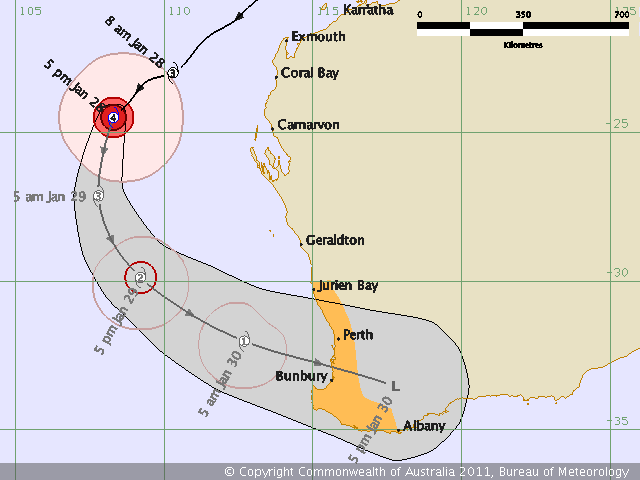
quote:Cyclone Wilma hits Northland
Flooding has trapped two Kaeo families in their homes and another two people in their car as the remnants of Cyclone Wilma cause havoc across Northland.
Police Inspector Shawn Rutene said slips, flooding and fallen trees had caused a number of road closures.
Emergency services were working to rescue two families were trapped in their homes by the rising Kaeo River, he said.
Elsewhere in Northland, police were trying to rescue two people trapped after logs blocked the road at Okaihau and in the Coromandel two people were trapped in a car.
Emergency services throughout Northland were stretched and police were asking people to keep off the roads, Rutene said.
Police expected when high tide hit around 4am some low lying roads would be impassable due to water.
There was also understood to be flooding in Matakana, Mangawhai and along the waterfront at Paihia.
Earlier, MetService warned that Wilma's remnants would bring heavy rain to Northland, Auckland, Waikato, the Coromandel Peninsula, Bay of Plenty and Gisborne.
Rainfall rates were forecast to reach up to 25 to 40mm per hour for a time.
Strong or gale force winds were also forecast. Winds were forecast to reach severe gale overnight in parts of eastern Northland and Great Barrier Island where gusts of 130 km/h were possible, MetService said.
Northeast swells and very rough seas were forecast for eastern coastal areas from Northland to East Cape.
Rain should clear from most areas by midday tomorrow, though it may continue into the afternoon for Gisborne, MetService said.
[ Bericht 17% gewijzigd door #ANONIEM op 28-01-2011 14:04:06 ]
quote:The Bay of Plenty, Northland and the Coromandel have a clean up job on their hands after tropical cyclone Wilma battered the regions over night.
For the second weekend in a row coastal towns and rivers were flooded, closing roads and causing evacuations.
The bucketing rain left roads up north underwater, and homes, as well as water and sewage treatment plants were damaged.
State Highway One heading north from Auckland was closed with traffic having to be diverted.
The New Zealand Transport Authority says people should only drive if absolutely necessary, and if they do they should take extreme care.
The Bay of Plenty also copped it again after being soaked last weekend.
On State Highway 2 between Tauranga and Whakatane there were three slips within two kilometres. Trucks were trapped in between them, drivers couldn't get out but they were lucky just to be able to stop in time.
Campers at the Mt Maunganui campground were woken at 4am by the flooding.
Despite the rain, Tauranga City residents are being urged to conserve water for the next 24 hours.
Both of the city's water processing plants have been shut down because of the heavy rain, and a major water main's broken meaning the city's relying on reservoir storage.
Some campers though have still been able to enjoy themselves.
I thought better transport kayaking down than walking down so I thought I would give it a go, says camper Shaun Middleton.
In Waipuna nine patients were evacuated from a hospice as river water surged from the Kaimai Ranges.
We had volunteers with four wheel drives ferrying people back and forwards across the flood, they became our ferry for the day, says Waipuna Hospice CEO Richard Thurlow.
Further north in the Coromandel it was a similar story.
A slip on the Thames Coast road forced the evacuation of two houses, one of which could still come down with the moving earth.
Some of the boulders that have come through are the size of cars. There's a pine tree on the beach that was on the front yard of one of the houses that was evacuated, so it's reasonably dangerous, says Thames volunteer fire brigade station officer Ken Brokenshire.
Tropical cyclone Wilma has now passed over the North Island, however the MetService is warning that gale force winds will hit exposed places in the Far North, Auckland, East Coast and Taranaki.


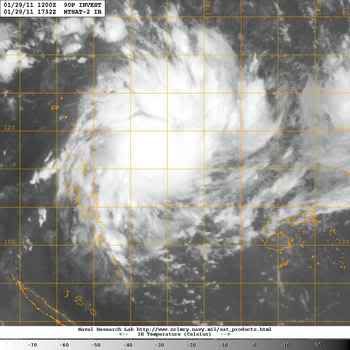
quote:Two cyclones threaten flood-ravaged Qld
Communities along almost 2000 kilometres of Queensland coastline are preparing for the first of two tropical cyclones to hit.
By 7pm (AEST) on Saturday, Tropical Cyclone Anthony was about 830 kilometres northeast of Townsville and was expected to cross the coast late on Sunday or early Monday as a category one or low category two system.
The Bureau of Meteorology (BOM) is expecting high rainfall for north and central Queensland and abnormally high tides are expected between Townsville and Bowen.
It comes amid concern a second cyclone, named Yasi, will develop from an intense tropical low currently near Fiji and hit the Queensland coast next Thursday.
The area of concern extends 1700 kilometres from Cooktown down to Hervey Bay, including several major population centres - Cairns, Townsville, Mackay, Rockhampton, Gladstone and Bundaberg.
State disaster management coordinator Ian Stewart urged people living in these areas to prepare.
"The reason we are considering this broader area, is to ensure that the preparations of the community and emergency service personnel are adequate for Tropical Cyclone Anthony ... and a further cyclone Yasi, later in the week," he said.







[ Bericht 0% gewijzigd door #ANONIEM op 29-01-2011 20:36:48 ]
quote:Cycloon Anthony nadert Queensland
De cycloon Anthony nadert langzaam richting de kust van Queensland, momenteel gelden er al waarschuwingen voor voor de kustplaatsen van Innisfail tot aan Saint Lawrence. Anthony is al de gehele week Queensland aan het "teisteren", nadat hij zich eerst ontwikkelde voor de noordoost kust in de buurt van Willis Island. Terwijl velen al dachten de cycloon uit beeld was, had Anthony andere plannen en maakte een drastische ommezwaai.
De categorie een cycloon is nog steeds meer dan 900 kilometer ten oost-noordoosten van Townsville en trekt langzaam naar het zuidwesten. Doordat de cycloon eerst nog door de warme wateren van de Coral Sea trekt, kan het zijn dat de cycloon Anthony nog licht gaat intensiveren als hij de kust nadert van Queensland. Tegen het eind van zondag kunnen er zware wind en windstoten zich ontwikkelen aan de kustgebieden en eilanden tussen Innisfail en St Lawrence. De verwachting is dat Anthony in de buurt van Townsville vanaf zondagavond of in de vroege ochtenduren van maandag aan land komt.
Zware regenval wordt er ook verwacht in het noordoosten, voornamelijk in Herbert en Neder-Burdekin districten. Overstromingen zijn niet uitgesloten. Queensland is momenteel nog herstellende van de overstromingen die zich eind vorig jaar en begin dit jaar voordeden.
BRISBANE - Het oosten van Australië zet zich schrap voor nieuw noodweer. Twee cyclonen koersen af op de staat Queensland. In de loop van zondag komt de eerste, Anthony genaamd, aan land.
Het Australische weersinstituut BOM waarschuwt voor zware windstoten en extreme regenval.
Tegen het einde van komende week krijgt het oosten van Australië te maken met de tweede cycloon, Yasi. Die hangt nu boven Vanuatu, een eilandengroep in de Grote Oceaan ten oosten van Australië. Yasi lijkt nog zwaarder te worden dan Anthony.
De premier van Queensland, Anna Bligh, noemde de twee cyclonen zondag ''David en Goliath
Binnenlandse tsunami
Queensland werd onlangs getroffen door zware overstromingen na de cycloon Tasha. Een enorm gebied kwam onder water te staan. Ongeveer dertig mensen kwamen om het leven. Sommige dorpen kregen te maken met wat een ''binnenlandse tsunami werd genoemd.
De weersoverlast wordt vermoedelijk veroorzaakt door het klimaatverschijnsel La Niña, een zeestroming die vanuit Zuid-Amerika richting Australië en de Indische Oceaan gaat. Door La Niña, de tegenhanger van het bekendere El Niño, is het zeewater bij Australië al maanden warmer dan gemiddeld.
Daardoor verdampt meer water dan normaal, wat leidt tot zware regenval in kustgebieden.
nu.nl
[ Bericht 0% gewijzigd door #ANONIEM op 30-01-2011 13:25:03 ]
Anthony en Yasi
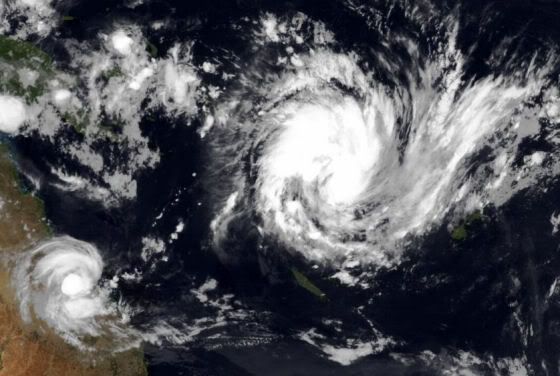
Yasi heeft nu een windsnelheid van 80 km/uur en windstoten tot 105 km/uur.
De storm zal verder in kracht toenemen en naar verwachting zal deze zelfs een categorie 3 sterkte bereiken. De cycloon zal in hetzelfde gebied landfall gaan maken als Anthony.
Het trekt nu weg als tropische depressie met nog steeds veel neerslag, op sommige plaatsen is tegen de 300 mm regen gevallen.
quote:Tropical Cyclone Anthony has been downgraded to a tropical low after crossing the Queensland coast but is still causing severe conditions in the state's north.
Tropical Cyclone Anthony crossed the coast near Bowen about 10pm (AEST) as a category two system.
It was packing winds of up to 150 kilometres an hour near its core.
Weather bureau senior forecaster Ben Annells says there has been falls of up to 300 millimetres in the Pioneer River catchment near Mackay.
"That heavier rain is starting to move inland as well and we're starting to see some falls above 50 millimetres through parts of the central interior of Queensland," he said.
Even though the system has since been downgraded to a tropical low, the bureau is still warning of heavy rainfall and damaging wind gusts about the central coast, the Whitsundays, and the northern parts of the Central Highlands and coalfields.
De bewoners van Rockhampton, die afgelopen maand getroffen werden door overstromingen kunnen hun borst nat maken. De bewoners zijn gewaarschuwd om zich voor te bereiden. Yasi zal naar alle waarschijnlijkheid een potentiële gevaarlijke cycloon gaan worden, die woensdagavond of donderdag met een categorie 3 aan land zal komen. Momenteel berekenen de weermodellen van de US Navy dat er windstoten voor kunnen gaan komen die op kunnen lopen tot 200 kilometer per uur.

Verwacht wordt dat cycloon Yasi aan land komt tussen Cooktown en Hervey Bay. De cycloon is minstens vier keer zo groot als cycloon Anthony. Naarmate de dag vordert zal er meer informatie volgen door het meteorologisch bureau (BOM), die hebben de verantwoordelijkheid op dat gebied. De computer modellen suggereren dat het heel snel naar het oosten zal trekken in de komende paar dagen.
Er moet niet alleen gekeken worden naar de wind die de cycloon met zich meebrengt, ook enorme hoeveelheden neerslag worden er verwacht in het centraal Queensland later deze week. De verwachtte neerslag loopt momenteel uiteen van meer dan 200mm voor St Lawrence, 150mm voor Rockhampton en bijna 300mm bij Mackay. Deze enorme hoeveelheden neerslag kunnen makkelijk leiden tot overstromingen.
©onweer-online
[ Bericht 0% gewijzigd door meteo-online op 31-01-2011 09:50:08 ]

quote:People in north Queensland have been warned to expect wind speeds of up to 260 kilometres per hour when a "big, ugly sister" cyclone makes landfall later this week.
Emergency Management Queensland (EMQ), police and weather officials are meeting across the state's far north today to discuss the possible threat of Tropical Cyclone Yasi.
The category-one system is north-west of Vanuatu but is expected to intensify before crossing the Queensland coast on Wednesday or Thursday.
Authorities fear the massive cyclone could be as intense as Cyclone Larry, which devastated parts of far north Queensland in 2006.
Queensland Police says it is the "big, ugly sister" to Cyclone Anthony, which caused only minor damage as it crossed the state's north coast near Bowen, south of Townsville, overnight.
Of ze nog niet genoeg ellende hebben gehad daar

Sommige plaatsen meer dan 100mm afgelopen 24 uur.
Anthony heeft goed zijn werk gedaan en er komt een nog veel grotere aan

Doomsdaydonderdag voor Queenslandquote:Thursday's cyclone to be 'a state event'
North Queensland has endured the destructive winds of Cyclone Anthony, but the weather bureau is warning a bigger cyclone that's likely to affect a much larger area of the state is on the way.
Cyclone Yasi is just north of Vanuatu, about 2000 kilometres east-northeast of Bowen, which suffered only minor damage when Anthony crossed the coast on Sunday night.
Unlike Anthony, which weakened into a low pressure system after crossing land, Yasi is expected to menace Queensland as a strong cyclone even after crossing the coast.
Advertisement: Story continues below
Queensland's Bureau of Meteorology says it's likely to cross the north coast either on Wednesday night or Thursday morning.
The bureau's senior forecaster Gordon Banks said Yasi would be big and intense, bringing destructive winds and heavy rain across the state.
He said like January's devastating floods, Yasi will most likely be a state event.
"It's going to affect a much larger area [than Anthony] both with rainfall and wind and because of its size and strength, it's likely to persist as a cyclone even after it crosses land," Mr Banks told ABC Radio.
"I think eventually Yasi will be a whole state event."
Monsterstorm Yasi op weg naar Queensland, Australie
Hurricane Season in Australia is halverwege.. kans op een nieuwe orkaan na Yasi blijft onverminderd hoog daar

bron
quote:Bureau warns cyclone season far from over
The Bureau of Meteorology says there is a very good chance that more cyclones will hit Australia before the season is out.
Communities in north-west Queensland are preparing for category one Cyclone Yasi, which crossed the coast as a category five storm overnight and left a trail of destruction.
The towns of Tully, Mission Beach, Cardwell, Silkwood and Innisfail bore the brunt of the monster storm's 285kph winds but there are no reports of deaths or serious injuries.
The director of the bureau's National Meteorological and Oceanographic Centre, Chris Ryan, says Cyclone Yasi has generally behaved as predicted so far.
He says Yasi was more intense than both Cyclone Tracy and Cyclone Larry.
"For the Queensland coast this is an exceptional storm. Its intensity looks like it's the most intense for many decades, perhaps going back before we had satellite imagery to properly measure the intensity of cyclones," he said.
The La Nina system which sparked the cyclone season is still well and truly kicking and Mr Ryan says more cyclones could be on the way.
"The waters all around tropical Australia are still abnormally warm," he said.
"The predictions for the general activity and the monsoon that covers northern Australia at this time of year are that it will actually intensify to some extent over the next couple of weeks.
"So there's certainly every chance that we will see one or more cyclones on either or both sides of the continent over the next couple of months."
He says he would not be surprised if another big cyclone forms.
"The situation hasn't changed to make it any less susceptible to severe cyclones developing again," he said.
As emergency crews and residents begin to assess the damage in coastal regions, Mr Ryan says the bureau is conscious of the risk of false alarms, but at this stage the warnings have matched people's experiences.
"The problem of false alarms and crying wolf is one that we're very conscious of with all of the warnings that we issue," he said.
"In this case we'll have to see how it's perceived. But from everything that I've heard, people who were in the midst of this have all said it was the worst they've ever experienced.
"It was terrifying. And that matches what we were leading them to believe would happen."
Mr Ryan says while the bureau is not yet able to retrieve wind speed measurements, it has estimated speeds of up to 290kph on the coast.
He says it is unusual for a cyclone to remain a category three once it has moved inland for as long as Yasi did.
"Cyclones tend to start to deteriorate very quickly once they lose that energy source from the ocean," he said.
"Yasi, being so big, and to some extent more self-contained, has lasted longer. It was still category two... some 11 or so hours after it crossed the coast. That's pretty unusual. And we're not expecting it to drop below category one until late [Thursday]."
Een miljoen mensen op de vlucht voor het water in Sri Lanka
Misschien een nieuw systeem bij de Tonga eilanden.
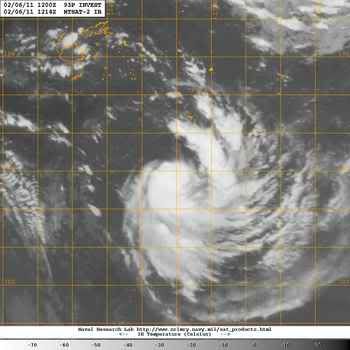

dat is wel een open deur zegquote:Op woensdag 9 februari 2011 10:30 schreef meteo-online het volgende:
Ik las vanmorgen dat op de lange termijn Australie weer te maken gaat krijgen met een cycloon
quote:New Cyclone threat for Australia?
The GFS long range weather maps, used by New Zealand and Australian forecasters but produced in America, are picking that a new cyclone may hit northern Australia early next week says WeatherWatch.co.nz.
The long range models, which have been highly accurate this summer, predict a weak low will cross the northern tip of Queensland on Friday then rapidly intensify into a cyclone by Monday in the Gulf of Carpentaria. While this part of Australia is not heavily populated the tropical storm could then head south, dumping more torrential rain on normally dry inland parts, such as Alice Springs, which is this year receiving huge amounts of rain.
Flooding from ex-cyclone Yasi has already caused problems across inland/western Queensland and the Northern Territories. Of short term interest the Bureau of Meteorology have "high" confidence that another cyclone will form west of Western Australia in the coming days. The good news is that the predicted cyclone is expected to travel well west of the continent and away from land.
However the long range models show plenty of unstable weather conditions along Australia's north western coastline with one model predicting another low developing west of Darwin and heading inland at the end of next week. Again, this part of Australia isn't heavily populated but the lows have the potential to continue to string of flash flooding across inland regions says WeatherWatch.co.nz.
Kaartje voor 14 februari laat een systeem bij Madagascar zienquote:Op woensdag 9 februari 2011 10:02 schreef Frutsel het volgende:
Bij Madagascar lijkt zich ook wat te ontwikkelen nu, redelijke kans tot ontwikkeling
[ afbeelding ]
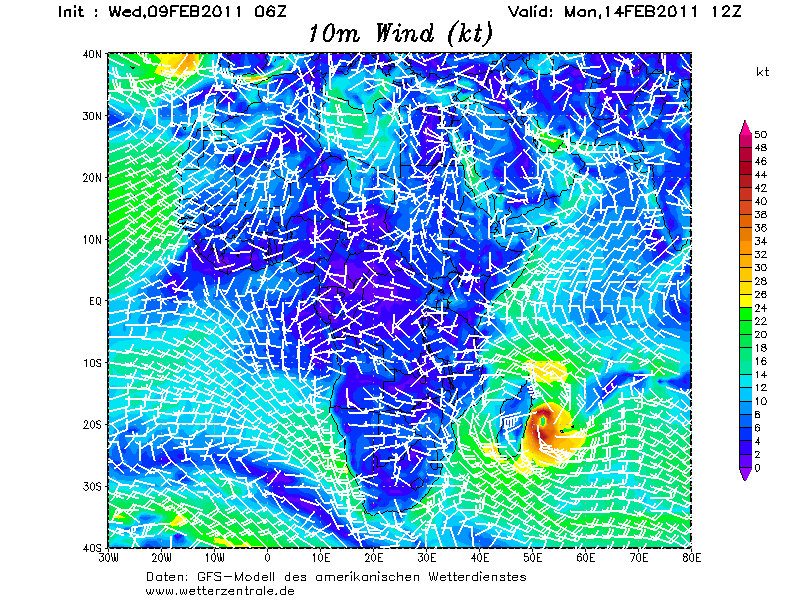
Golf van Carpentaria. 14 februari lijkt er ook wat te ontstaan.quote:
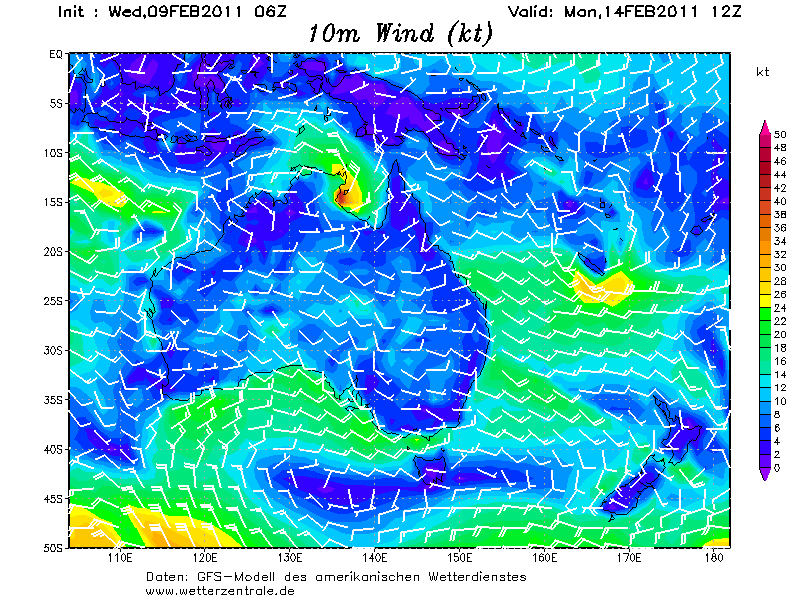
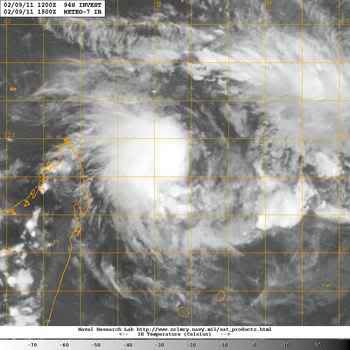
Naam van deze orkaan is BINGIZA

[ Bericht 4% gewijzigd door #ANONIEM op 09-02-2011 22:36:57 ]
Hier mooi satellietplaatje
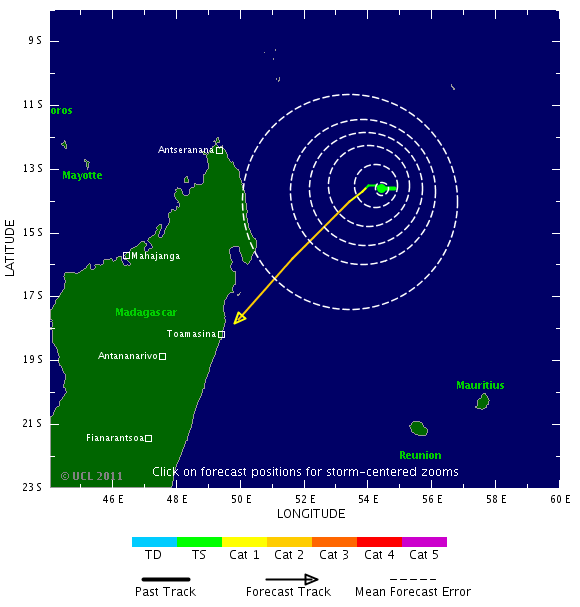
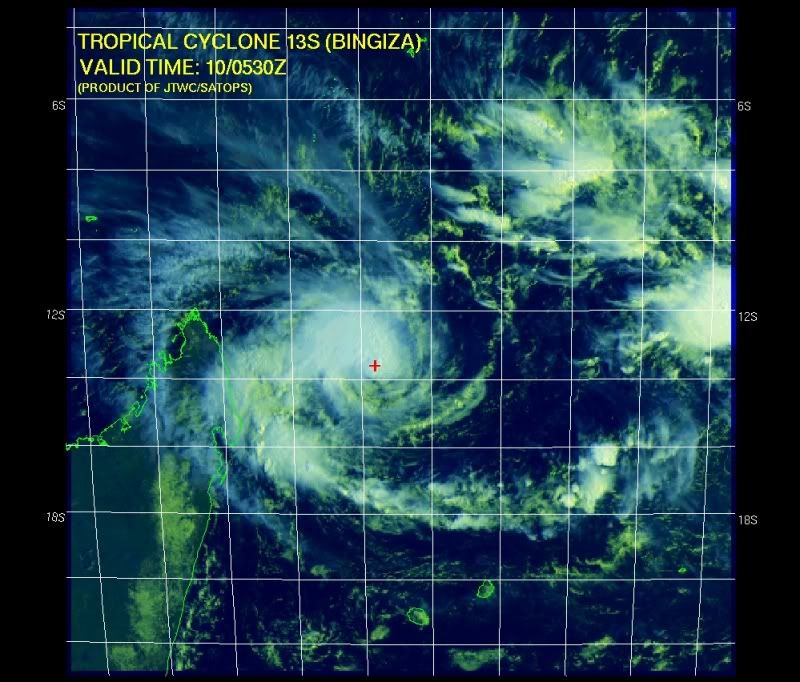
kaartje van 15 februari
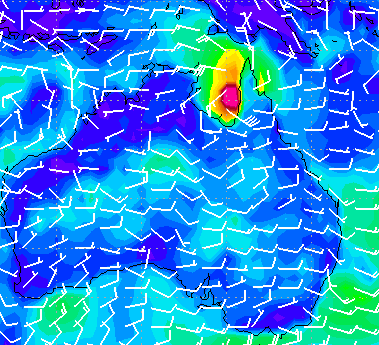

Bingiza on the move
Ze beweegt zo langzaam, genoeg warmte om haar te voeden
dacht dat madagascar er wel goed vanaf kwam na die downgrade van deze week
maar nu is het gewoon een zeer gevaarlijke orkaan

Nu een windveld van 185 km met windstoten tot 231 km/uur.

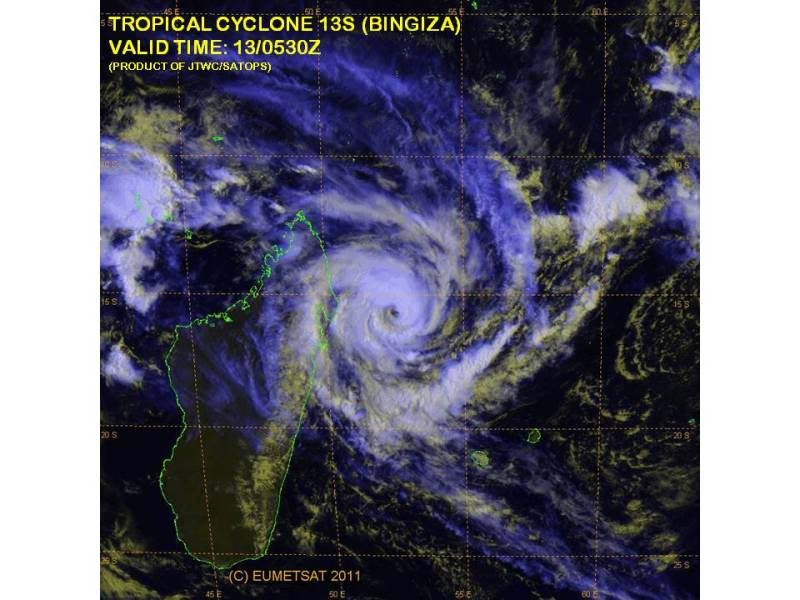
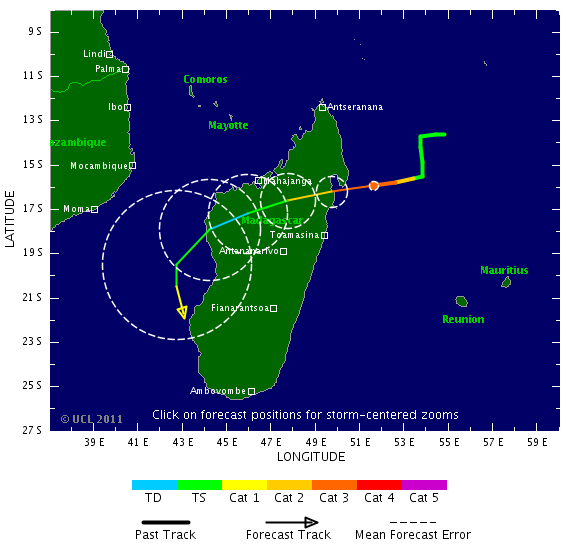
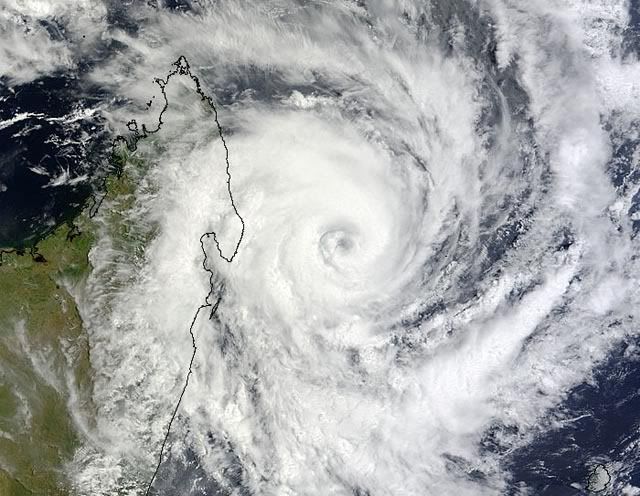
Bingiza is just the second tropical cyclone in the Southwest Indian Ocean (west of 90E) during the 2010 - 2011 season; this is an unusually low amount of activity for the basin. The only other storm so far this season has been Tropical Cyclone Abele (29 Nov - 4 Dec 2010), a Category 1 storm that stayed out to sea. Bingiza is the 4th major (Category 3 or stronger) tropical cyclone world-wide this year.
Wunderground
[ Bericht 2% gewijzigd door #ANONIEM op 14-02-2011 19:41:04 ]

quote:Potential Cyclones:
At 2pm WST a developing tropical low [16U] was located near 19.1S 112.7E, about
350 kilometres north northwest of Exmouth and moving towards the west southwest
at 24 kilometres per hour. Refer to the latest Tropical Cyclone Advice
[IDW24100] for details.
Likelihood of this system being a tropical cyclone in the Western Region:
Wednesday :High
Thursday :High
Friday :High
quote:Potential Cyclones:
A developing Tropical Low, 1002 hPa, was located over the western Top End near
13.2S 130.5E, approximately 100km south southwest of Darwin at 12:30 pm CST on
15 February and moving slowly west northwest. The low is expected to move north
or north northwest into the Beagle Gulf and may develop into a tropical cyclone
during Wednesday.
Likelihood of this system being a tropical cyclone in the region on:
Wednesday: High.
Thursday: High.
Friday: High.

http://www.bom.gov.au/products/IDR633.loop.shtml#skip
Het was vorig jaar een druk orkaanseizoen in de Atlantische regio. Sinds 2005 - het jaar van orkaan Katrina - waren er nooit meer orkanen. Liefst twaalf stormen werden in 2010 tot orkaan uitgeroepen. Dit filmpje toont het hele seizoen in één minuut.
Het orkaanseizoen was vorig jaar ook opmerkelijk, omdat voor het eerst sinds 1998 nog eens drie orkanen tegelijk actief waren. Igor, Julia en Karl kregen die eer. Igor en Julia waren zelfs samen een orkaan van categorie 4 en dat was sinds 1926 niet meer gebeurd. (gb)
hln
[ Bericht 15% gewijzigd door #ANONIEM op 15-02-2011 19:14:11 ]
Deze krijgen de namen Carlos en Dianne.
Ziet er gaaf uit zegquote:Op dinsdag 15 februari 2011 19:11 schreef aloa het volgende:
Orkaanseizoen in één minuut
Het was vorig jaar een druk orkaanseizoen in de Atlantische regio. Sinds 2005 - het jaar van orkaan Katrina - waren er nooit meer orkanen. Liefst twaalf stormen werden in 2010 tot orkaan uitgeroepen. Dit filmpje toont het hele seizoen in één minuut.
Het orkaanseizoen was vorig jaar ook opmerkelijk, omdat voor het eerst sinds 1998 nog eens drie orkanen tegelijk actief waren. Igor, Julia en Karl kregen die eer. Igor en Julia waren zelfs samen een orkaan van categorie 4 en dat was sinds 1926 niet meer gebeurd. (gb)
hln
(Novum/AP) - De cycloon Carlos heeft in de Noord-Australische stad Darwin voor hevige regenval en windstoten met snelheden tot 130 kilometer per uur gezorgd. Bomen en elektriciteitspalen gingen tegen de vlakte.
Verscheidene mensen moesten uit hun auto gered worden en één man raakte gewond toen hij door een vallende boom werd geraakt. Scholen en overheidsgebouwen sloten hun deuren, maar evacuaties waren niet nodig, aldus de autoriteiten.
Het oog van de storm liep op drie kilometer langs de stad, maar bleef wel boven zee. Volgens de nationale meteorologische dienst kan de cycloon donderdag terugkeren naar Darwin.
Twee weken geleden verwoestte de veel krachtigere cycloon Yasi meerdere steden in de noordoostelijke staat Queensland.
Nieuws.nl
De Australische stad Darwin, in het noorden van het land, is vandaag getroffen door de cycloon Carlos. Rukwinden van 110 kilometer per uur en hevige regen teisterden de stad.
Verschillende scholen en de luchthaven werden gesloten terwijl de stad met 120.000 inwoners getroffen werd door overstromingen en stroomonderbrekingen, zo melden lokale media. Volgens tv-zender ABC liepen de straten onder water en werden bomen uit de grond gerukt. Naar verluidt vielen er geen gewonden.
Op een schaal van een tot vijf werd Carlos geklasseerd als een categorie 1, aldus de meteorologische diensten. De cycloon volgt twee weken na de gelijkaardige storm Yasi, die voor 1 miljard Australische dollar aan schade veroorzaakt heeft. (afp/adv)
HLN
bronquote:Darwin residents warned to prepare but not panic
Tropical Cyclone Carlos is continuing to dump record levels of rain on Darwin as the city's residents deal with cyclonic weather.
More than 400 millimetres of rain fell on the city overnight, forcing the evacuation of 11 houses, and emergency services are preparing to use sandbags to protect more houses which face flooding when the tide peaks tonight.
At this stage the cyclone isn't expected to intensify above category two but the Top End does have a reputation for unpredictable cyclones. Michael Coggan reports from Darwin.
MICHAEL COGGAN: Darwin is familiar with cyclones; rarely does a wet season go by without one or two cyclones reminding Top Enders of the destruction caused by Cyclone Tracy in 1974. But Cyclone Carlos is different, even before it was officially declared a cyclone the weather system cut a swath through the Top End capital.
The combination of more than 400 millimetres of rain and winds, in excess of 100 kilometres per hour, have knocked down trees and powerlines across the city. Main roads have been cut by floodwaters and a 6.6 metre high tide this afternoon is expected to add to the 11 homes inundated overnight.
[ Bericht 0% gewijzigd door #ANONIEM op 16-02-2011 14:55:59 ]
quote:Tropical Cyclone Dumps Feet of Rain on Australia
Feet of rain from Tropical Cyclone Carlos have already inundated Australia's Top End with more rain to come before the cyclone finally departs later this week.
Carlos unleashed 22.24 inches of rain on Darwin, the capital city of Australia's Northern Territory, in 56 hours, ending at 5:30 p.m. Wednesday local time (3 a.m. EDT).
The 13.37 inches that fell in 24 hours, ending at 6:30 p.m. EDT Tuesday, set a new all-time daily rainfall record. The old record was held by Jan. 3, 1997 and its 11.43 inches.
The torrential rain has inundated homes and streets in and around Darwin. The Associated Press reports that several people had to be rescued from cars that became stalled in flood waters.
Gusty winds, which peaked at 61 mph in Darwin Tuesday morning EDT, worsened the situation by downing trees and power lines.
One man sustained injuries after being struck by a falling tree.
Darwin and other locations across Australia's Top End will be faced with more flooding problems over the next couple of days as Carlos slowly meanders southwestward and unleashes additional torrential rain.
The heavy rain will finally end Friday into Saturday as Carlos shifts into northern Western Australia.
Interaction with land will prevent Carlos from strengthening into a powerful cyclone. However, more damage to trees and power lines may ensue as tropical storm-force wind gusts continue to accompany the cyclone.
Accuweatherquote:Carlos, and Now a New Australia Cyclone Threat
Even as Carlos continues to inundate Darwin, a new tropical cyclone, dubbed Dianne, has taken shape off northwestern Australia, from whence it will eventually threaten the nation's west with damaging winds and flooding rain.
Wednesday morning, EST, the center of T.C. Dianne lay about 300 miles northwest of Learmonth, near Cape North West, Western Australia. Highest sustained winds were at least 40 mph. The storm was nearly stationary.
The atmospheric setting will favor intensification, even rapidly so, during the next two days, so Dianne could become the equivalent of a strong hurricane.
Storm movement will become southward, maybe on a path intersecting the west coast of Australia near the end of the week.
Direct high wind impact will be confined to open seas for at least the next two days. However, moisture linked to Dianne will trigger local flooding downpours over far-western Australia, most of which is sparsely settled desert.
Depending on track, Dianne could eventually spark an outbreak of widespread flooding rain and even damaging winds.
[ Bericht 0% gewijzigd door #ANONIEM op 16-02-2011 14:53:25 ]
quote:Darwin sets its all-time 24-hour rainfall record
Darwin, Australia suffered its greatest 24-hour rainfall in its history on Wednesday, when a deluge of 13.4 inches (339.4 mm) hit the city when Tropical Cyclone Carlos formed virtually on top of city and remained nearly stationary. Over the past three days, Carlos has dumped a remarkable 25.37" (644.6 mm) of rain on the Darwin (population 125,000), capital of Australia's Northern Territory. Carlos has moved slowly inland today, and continues to dump rain on Darwin, but these rains will gradually subside over the next few days as the storm weakens and moves farther inland. Not surprisingly, the rains have triggered major flooding in the Darwin area. The heavy rains in Darwin are due to the very slow motion of the storm, which has been able to keep a significant portion of its circulation over the warm 30°C (86°F) waters off the coast. These water temperatures are near normal for this time of year. Australia's west coast is also watching Tropical Cyclone Dianne, which is expected to remain offshore as it moves southwards, parallel to the coast.
quote:Tropical Cyclone Bingiza makes a 2nd landfall in Madagascar
On Monday, Tropical Cyclone Bingiza roared ashore over Northern Madagascar as a dangerous Category 3 hurricane with 115 mph winds. The storm is being blamed for six deaths, has left 15,000 homeless, and has destroyed 8,500 buildings. After re-emerging over the waters of the Mozambique Channel between Africa and Madagascar on Tuesday, Bingiza re-intensified, and made a second landfall along the southwest coast of Madagascar early today as a tropical storm. Bingiza is expected to dissipate over Madagascar tomorrow, but not before dumping very heavy rains capable of causing additional flooding problems on Madagascar's deforested mountain slopes.
Bingiza is just the second tropical cyclone in the Southwest Indian Ocean (west of 90E) during the 2010 - 2011 season; this is an unusually low amount of activity for the basin. According to an email I received from Sebastien Langlade of the tropical cyclone forecasting office on La Reunion Island, January 2011 was the first January since accurate records began in 1998 that the Southwest Indian Ocean failed to record a single tropical storm. The only other storm in the basin so far this season has been Tropical Cyclone Abele (29 Nov - 4 Dec 2010), a Category 1 storm that stayed out to sea. Bingiza was the 4th major (Category 3 or stronger) tropical cyclone world-wide this year.
kaartje van volgende week vrijdag. Carlos ligt dan aan de westkust
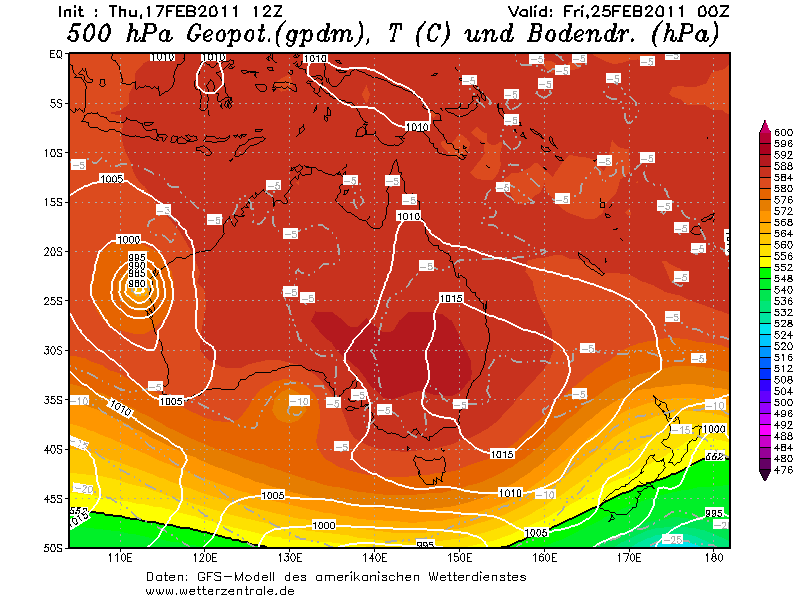
[ Bericht 4% gewijzigd door #ANONIEM op 17-02-2011 20:30:05 ]

Flinke storm weer bij Vanuatu, genaamd Atu
quote:Carlos hits North Australia
River Daly peaked early in the day, flooding homes in the small town of Nauiyu, south of Darwin.
Local reports state animals in the area were snatched by crocodiles swimming in flood waters.
Authorities predict flood levels will not recede for at least four days. Makeshift shelters have been set up to house the community.
The Bureau of Meteorology has warned that Cyclone Carlos has now intensified into a Category One cyclone.

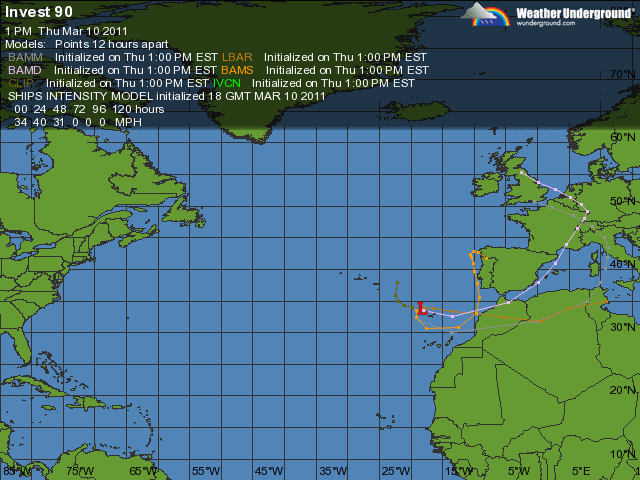

dan die japan nog raken?quote:Op donderdag 17 maart 2011 08:55 schreef aloa het volgende:
Nummer 18 in de Indische Oceaan.
[ afbeelding ]
Dan is het feest compleet daar
Indische Oceaan ligt nog wel een eindje van Japan afquote:Op donderdag 17 maart 2011 09:36 schreef Jumparound het volgende:
[..]
dan die japan nog raken?
Dan is het feest compleet daar
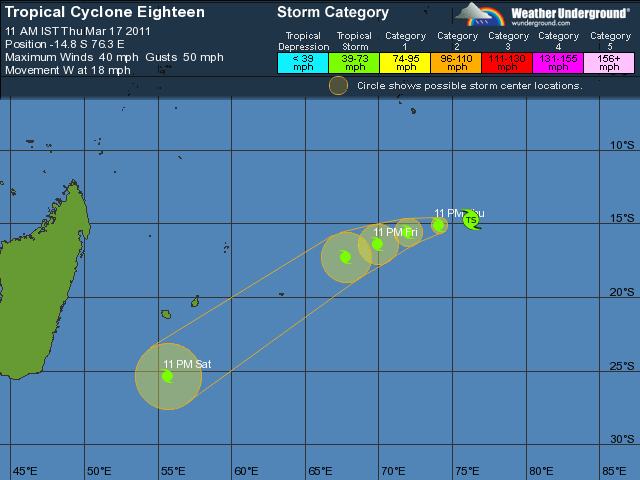
quote:Igor and Tomas retired Atlantic Huricane names
The hurricane committee of the World Meteorological Organization (WMO), which issues the list of potential names for tropical cyclones to be used every six years for both the Atlantic and eastern North Pacific basins, has decided to retire the Atlantic names Igor and Tomas.
Igor was a classic Cape Verde hurricane, reaching Category 4 strength with 155 miles per hour (250 kilometers per hour) winds on September 14, 2010, while located about 600 miles (965 kilometers) east of the northern Leeward Islands. The storm weakened to a Category 1 hurricane when it struck Bermuda on September 19.
Igor grew in size, with the area of tropical-storm-force winds becoming roughly 750 nautical miles (1389 kilometers) wide and made landfall on September 21 near Cape Race in Newfoundland. It was the most damaging hurricane on that island in 75 years and killed three people along its path. Damage in Newfoundland was placed at almost $200 million U.S. dollars.
Tomas, meanwhile, became a hurricane on October 30, shortly after striking Barbados. It strengthened to a Category 2 storm striking St. Vincent and St. Lucia, becoming the latest hurricane on record to strike the Windward Islands.
After weakening to a tropical depression over the central Caribbean Sea, Tomas regained Category 1 strength on November 5 and moved between Jamaica and the southwest peninsula of Haiti, through the Windward Passage. It weakened just below hurricane strength before reaching the Turks and Caicos Islands. Fourteen people are confirmed as dead, or missing, on St. Lucia. Total damage there is estimated to be around $500 million U.S. dollars. Heavy rains associated with Tomas triggered floods and landslides in Haiti, where meteorological services state that the death toll was 35.
If the WMO hurricane committee had not decided to scrap the names, Igor and Tomas in the Atlantic would have appeared again in 2016. Ian and Tobias will now take their place instead.
The only time that there is a change in the list of names is if a storm is so deadly or costly that the future use of its name on a different storm would be inappropriate for reasons of sensitivity. If that occurs, then at an annual meeting by the WMO committee, the offending name is stricken from the list and another name is selected to replace it.
The lists are re-cycled every six years, i.e., the 2010 list will be used again in 2016.

While typhoon season doesn't typically ramp up around Japan until late summer, the threat of a tropical system affecting the fragile nation as it slowly recovers from the devastating earthquake and tsunami is a major concern.
Japan is located in the most active tropical basin in the world. Historically, tropical systems passing within 100 miles (160 km) of Sendai, Japan, an area hit hard by the earthquake and tsunami, have been observed as early as mid-June.
However, the threat of a tropical system affecting Japan usually becomes greatest in August and September, when ocean waters that far north are warmest, according to AccuWeather.com Expert Tropical Forecaster Dan Kottlowski.
In the western North Pacific Basin as a whole, typhoons and tropical storms can develop any time of the year, but the period from July through October is normally the most active.

This graphic displays the total number of tropical storms, as well as the number of those forecast to develop into typhoons and super typhoons, expected in the western North Pacific Basin in 2011 compared to the average number per year.
This year in the western North Pacific Basin, the AccuWeather.com Hurricane Center is forecasting a fairly average typhoon season with a total of 27 tropical storms, 16 of which will become typhoons and 4 of which will strengthen into super typhoons.
The definitions of a typhoon, super typhoon, tropical storm and tropical depression are given at the bottom of this page.
Odds of a Typhoon Hitting Japan Disaster Areas this Year
There are several good things going for the disaster areas of Japan in terms of the risk of impact from a typhoon. However, despite these positives, tropical systems do affect northern Japan with some regularity, and flooding rain tends to be the biggest problem.
One of the positives is that only a small percentage of tropical systems that develop in the western North Pacific basin impact northeastern Japan.
Out of the estimated 1,757 tropical storms and typhoons that have formed in the western North Pacific basin between 1945 and 2008, approximately 40 (2 percent) have tracked within 100 miles (160 km) of Sendai. Storm tracks are based on the movement of the center or eye of the storm.
The other positive is that, historically, typhoons that do affect northern Japan tend to be in a weakening phase and do not pose a significant damaging wind threat.
This is due in part to the fact that these typhoons have often already made landfall either in southern Japan or somewhere else in the western North Pacific basin. It is also due in part to the fact that waters over which these systems track are cooler offshore of northern Japan.
Of the 40 tropical systems that passed within 100 miles of Sendai between 1945 and 2008, 16 were of typhoon strength at some point within 100 miles of Sendai. None of those typhoons were stronger than a Category 2 hurricane when they entered the 100-mile radius.
In fact, all but one of those 16 typhoons had a strength equivalent to a Category 1 hurricane during that time.

This image, courtesy of the U.S. National Oceanic and Atmospheric Administration's Historical Hurricane Tracks database, shows the tracks of tropical systems that moved within a 100-mile radius of Sendai, Japan, between 1945 and 2008. Light blue represents systems in the stage of a tropical depression, while green depicts a stage as a tropical storm. The other colors represent typhoons, with yellow being Category-1 hurricane strength, orange Category-2 hurricane strength and red Category-3 hurricane strength.
Because tropical systems that affect northern Japan tend to be weaker, the threat of wind damage is not a major concern. This is especially true for the earthquake and tsunami-ravaged areas of northeastern Japan, where the topography is such that these areas tend to be protected from damaging winds.
While the chance of any given typhoon, especially one stronger than a Category 2 hurricane, impacting Sendai (and other locations throughout the disaster area) is extremely small, tropical systems do affect that area with some regularity.
From 1945 to 2008, tropical systems have passed within 100 miles of Sendai 29 out of the 64 years, which is almost half the total number of years. The longest period of time that went by without a tropical system passing within 100 miles of Sendai was 4 years.
So even if the disaster areas of Japan were to escape impact from a tropical system this year, history would suggest that a system will affect these fragile areas within the next several years.
The last time a tropical system tracked significantly close to Sendai was in 2009. So if history repeats itself, one would expect another system to affect that area by 2013.
If or when that happens, flooding rain will be the biggest threat.
What is a Typhoon?
A typhoon is essentially the same thing as a hurricane. Both terms are regionally specific names for a strong tropical cyclone with sustained winds of at least 74 mph (119 kph).
A super typhoon, as defined by the U.S. Joint Typhoon Warning Center, is a typhoon with maximum sustained winds of at least 150 mph (241 kph), which would be equivalent to strong Category 4 or a Category 5 hurricane.
The term tropical storm is a name for a weaker tropical cyclone with sustained winds between 39 and 73 mph (62-117 kph). A tropical depression is a tropical cyclone with sustained winds less than 39 mph.
Accuweather
[ Bericht 11% gewijzigd door #ANONIEM op 24-03-2011 08:43:24 ]
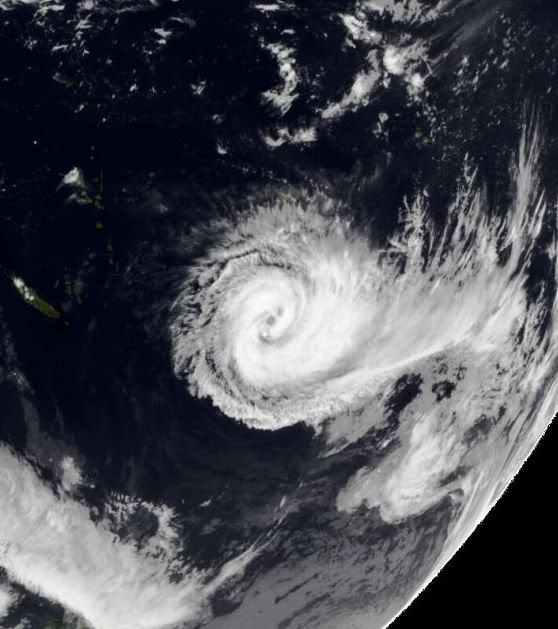

AccuWeather.com Hurricane Center meteorologists, led by Meteorologist and Hurricane Forecaster Paul Pastelok, are predicting an active season for 2011 with more impact on the U.S. coastline than last year.
The team is forecasting a total of 15 named tropical storms, eight of which will attain hurricane status and three of which will attain major hurricane status (Category 3 or higher).
In a normal year, there are 10 tropical storms, six of which become hurricanes and two of which become major hurricanes, or attain winds that exceed 110 mph.
2010's historic season had a total of 19 named storms and ranks as the third most active season on record, but there was little impact on the United States coastline. Twelve of these storms became hurricanes, five of which were major hurricanes. Two names from the 2010 season were retired on March 16.
"It looks like we're going to have more impact on the mainland of the U.S. coming up this year compared to last year," Pastelok said. "We had a lot of storms last year, but not a lot of impact [on the U.S.]."
In order to project the number of storms and impacts, the team looks at past years that have similar weather variables and patterns that closely resemble the most recent fall, winter and early spring months.
Factors for this Season
There are a number of physical drivers that have the team concerned for this upcoming hurricane season. These include:
--The orientation and position of the Azores and Bermuda high-pressure areas in the Atlantic
The Azores high is one of the bigger influences on the movement of tropical cyclones. High pressure systems alter the direction of a storm by steering the storm, a low pressure system, around it. This is one way forecasters can predict the track of a hurricane.
"The forecast position and strength of the Azores or Bermuda high is always a challenging forecast," Pastelok said. "An unexpected change could greatly alter where both early season and mid season storms track."
AccuWeather.com Expert Tropical Forecaster Dan Kottlowski added, "We do see some changes in the overall pattern across the Atlantic."
Kottlowski continued, "The water temps are not nearly as warm as they were last year, and also the upper air pattern looks slightly different... than last year, so that could have an impact as to where that subtropical high, that big high pressure area that helps guide tropical storms, sets up."
"It may weaken or actually reposition itself a little bit to the northeast as we get later in the season, which would allow more of a storm track closer to Florida and also up the East Coast," Kottlowski concluded.
--The future state of the ongoing La Niña
La Niña is a phenomenon that occurs when the surface waters in the central and eastern equatorial Pacific are colder than normal. La Niña results in low wind shear, especially in the main tropical development area in the Atlantic. Shear refers to strong winds that are high in the atmosphere. Wind shear is a "hurricane killer," in that it can hinder storm development as well as break up existing storms.
"Currently, right now we still are in a La Niña scenario, but it is starting to weaken," Pastelok said. "The signal is starting to show some signs of going neutral. That could have an impact on the westerly wind component down in the tropical Atlantic as well as the Caribbean. Stronger westerlies would prohibit major storms or a lot of storms, so it is a critical factor."
--The frequency and amount of dust that accompanies disturbances moving off the African coast
The presence of dust indicates dry air, which can hinder tropical development in the eastern Atlantic.
"Current projections on the weather pattern over Africa for this coming tropical season suggests there will be episodes of dust affecting development, but no more than normal," Pastelok said.
--A phenomenon known as Atlantic Multidecadal Oscillation (AMO)
AMO refers to the sea surface temperature in the northern Atlantic, and the temperature fluctuates from colder than average to warmer than average every few decades. Currently, the sea surface temperature is in the warm phase, and warm water is "hurricane fuel," in that it supports the development of tropical systems.
"We continue to observe the positive phase of the Atlantic Multidecadal Oscillation," said Paul Pastelok. "This will help to maintain warmer-than-normal water temperatures across most of the Atlantic Basin."

This Season's Concern Areas
As with most Atlantic hurricane seasons, the areas where storms are most likely to make landfall shift as the season progresses.
This year, the early season threat area will be the western Gulf of Mexico and the southern portion of the Caribbean. Within this zone, the higher concern for landfalls will be along the Texas and Louisiana coastlines.
As for the mid-to-late season zones, the eastern Gulf and Caribbean will be the focus. The higher concern areas will be the Florida Peninsula to the Carolinas.
"What we see is there is a clustering of storm impacts over the southeastern US, and that's the reason why we earmarked this as a concern area," said Kottlowski.
Another mid-to-late season concern for landfalls will be northern New England and the Canadian Maritimes.
"We feel that this season, there will be a higher potential for impacts across the southern part of the Basin into the Gulf of Mexico during the first part of the season," Pastelok stated. "This higher potential for impacts shift farther north into the southeast U.S. during the latter half of the season."
Hurricane season officially begins June 1 and ends Nov. 30.
For all the latest tropical information, be sure to check the AccuWeather.com Hurricane Center for the most up-to-date videos, information and storm tracks.
(Novum/AP) - Noodweer heeft in Bangladesh aan zeker dertien mensen het leven gekost. Daarnaast hebben rond de honderd mensen verwondingen opgelopen toen zes districten in het noorden van het land maandagavond door tropische stormen geteisterd werden.
In het getroffen gebied werden honderden onderkomens door de krachtige slagregens verwoest. Enkele duizenden mensen zijn dakloos geraakt. Dit hebben de Bengalese media dinsdag gemeld.
Nieuws.nl
Hurricane Season 2011
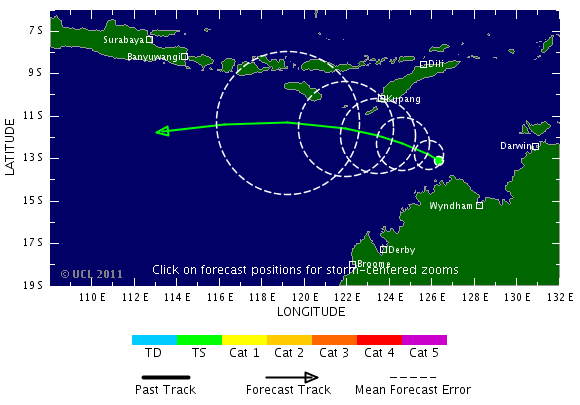
Nu al een Atlantische storm?

quote:An area of thunderstorms about 1,200 miles from Southwest Florida — which has the official name of Invest 91— is highly unlikely to develop into any kind of named storm.
So says Jim Farrell, WINK News chief meteorologist. “Could even be gone by tomorrow,” Farrell said. “I don’t anticipate much happening.”
If history is any guide, the weather system will most certainly die out. Since 1851 there has been only one named storm in April, Tropical Storm Ana in 2003.
The storm is in an area of high wind shear.
“A very hostile upper air environment,” Farrell said.
At higher altitudes, winds are racing west to east, a strong inhibitor to further development.
“This is very typical for this time of the year,” Farrell said.
The storm is about 460 miles northeast of Puerto Rico in the Atlantic Ocean.
The National Hurricane Center in Miami gives the storm only a 20 percent chance for further intensification. The NHC reported that ships in the storm’s area reported gale-force winds near the center of the disturbance. That would put wind gusts in the 45-to-50 mile-per-hour range.
quote:A tropical disturbance (91L) near 24N, 63W, midway between the Virgin Islands and Bermuda, is moving north-northwest at about 8 mph. The system's heavy thunderstorm activity has increased since yesterday, but 91L has an elongated and poorly-organized circulation, thanks to a hefty 80 knots of wind shear. The storm is over waters of 25°C, and these waters will cool to 24°C by Friday as the storm continues to the north-northwest. Before 91L reaches Bermuda, steering currents will reverse and force 91L to the south-southwest on Saturday, into a region of higher wind shear. The latest SHIPS model forecast predicts wind shear will drop to 50 knots over 91L by Friday, then increase again to 70 knots by Sunday. The high shear and relatively cool water temperatures will make it difficult for 91L to organize into a subtropical depression. I give 91L a 10% of becoming a subtropical depression. Climatology argues against 91L becoming the first named storm of the year; there has only been once named April storm in the Atlantic since 1851, Tropical Storm Ana of 2003. The formation of a tropical disturbance at this location this time of year is unusual, but is not necessarily a harbinger of a active season ahead.

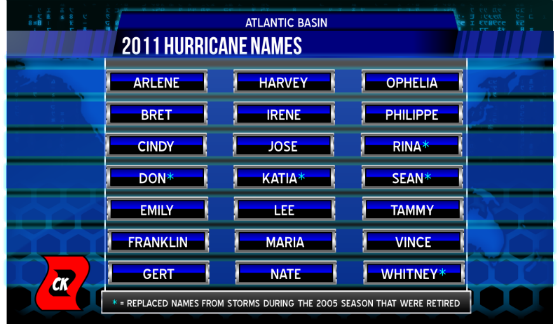
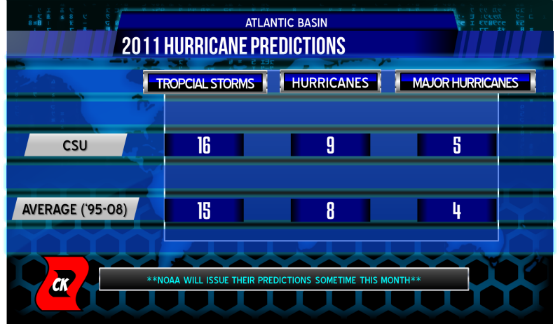
Dat is moeilijk te zeggen. Het seizoen kan vroeg beginnen, maar kan ook net als vorig jaar pas laat op gang komen.quote:Op dinsdag 3 mei 2011 14:06 schreef Floxxx het volgende:
Hmm, heeft iemand een idee wanneer ze de eerste (echte) orkaan verwachten? kan er niet veel over vinden (ja, ik weet het, officieel begint het orkaan seizoen op 1 juni, maar wanneer verwachten ze de eerste orkaan?)
Aan de zeewatertemperatuur zal het niet liggen...

Er van uit gaande dat je orkaan bedoeld (je schrijft ook (echte) erbij) en dus een Categorie 1 orkaan en geen tropische storm en/of depressies die ook namen krijgen dan is het volgens mij in de laatste dertig jaar niet voorgekomen dat er een Categorie 1 orkaan ontstond voor één juni. Misschien wel langer.quote:Op dinsdag 3 mei 2011 14:06 schreef Floxxx het volgende:
Hmm, heeft iemand een idee wanneer ze de eerste (echte) orkaan verwachten? kan er niet veel over vinden (ja, ik weet het, officieel begint het orkaan seizoen op 1 juni, maar wanneer verwachten ze de eerste orkaan?)
Ik zou op inzetten op de laatste week van juni voor de eerste Cat.1 Orkaan er is.
Ik doelde inderdaad op minimaal Cat 1, tropische stormen zijn niet zo interessantquote:Op dinsdag 3 mei 2011 16:47 schreef Frutsel het volgende:
[..]
Er van uit gaande dat je orkaan bedoeld (je schrijft ook (echte) erbij) en dus een Categorie 1 orkaan en geen tropische storm en/of depressies die ook namen krijgen dan is het volgens mij in de laatste dertig jaar niet voorgekomen dat er een Categorie 1 orkaan ontstond voor één juni. Misschien wel langer.
Ik zou op inzetten op de laatste week van juni voor de eerste Cat.1 Orkaan er is.
Ik woon namelijk in Florida en probeer er meestal wel een oogje op te houden, maar heb nooit echt nagekeken wanneer het nou echt begint :p
wat dat betreft wordt het wel weer eens tijd
Laatste zware orkaanseizoen voor Florida was in 2005 geloof ik, ik hoop dat het nog even uitblijft, maar ze verwachten een zwaar seizoen dit jaar, dus ben bang dat dat er niet in zit...quote:Op dinsdag 3 mei 2011 19:20 schreef Frutsel het volgende:
Laatste jaren is florida er redelijk ongeschonden vanaf gekomen denk ik?
wat dat betreft wordt het wel weer eens tijd
Dachten ze vorig jaar ook... toen werd het nada, noppes enzoquote:Op dinsdag 3 mei 2011 19:35 schreef Floxxx het volgende:
[..]
Laatste zware orkaanseizoen voor Florida was in 2005 geloof ik, ik hoop dat het nog even uitblijft, maar ze verwachten een zwaar seizoen dit jaar, dus ben bang dat dat er niet in zit...
Let's hope soquote:Op dinsdag 3 mei 2011 19:38 schreef Frutsel het volgende:
[..]
Dachten ze vorig jaar ook... toen werd het nada, noppes enzo
Een tropische storm kan voor flink wat ellende zorgen.quote:Op dinsdag 3 mei 2011 18:33 schreef Floxxx het volgende:
[..]
Ik doelde inderdaad op minimaal Cat 1, tropische stormen zijn niet zo interessant
Ik woon namelijk in Florida en probeer er meestal wel een oogje op te houden, maar heb nooit echt nagekeken wanneer het nou echt begint :p
Goed voorbeeld zijn de overstromingen in Australie begin dit jaar. Die werden veroorzaakt door een Tropische Storm...
Overstromingen Australie: Ergste in honderd jaar

Zo dan. Da's een nog grotere resevoir aan 30+ water dan in 2010. En uiteindelijk is dat toch de bak met energie die de orkanen moeten ledigen...quote:Op dinsdag 3 mei 2011 14:49 schreef aloa het volgende:
[..]
Dat is moeilijk te zeggen. Het seizoen kan vroeg beginnen, maar kan ook net als vorig jaar pas laat op gang komen.
Aan de zeewatertemperatuur zal het niet liggen...
[ afbeelding ]
Stiekem hoop ik op nog een Thomas die over Barbados heen scheert, en dat de instrumenten die we daar hebben staan het dan wel uithouden
Yasi, een monsterorkaan, kwam er toch ook nog overheen?quote:Op dinsdag 3 mei 2011 19:57 schreef aloa het volgende:
[..]
Een tropische storm kan voor flink wat ellende zorgen.
Goed voorbeeld zijn de overstromingen in Australie begin dit jaar. Die werden veroorzaakt door een Tropische Storm...
Overstromingen Australie: Ergste in honderd jaar
Die kwam inderdaad ook nog een aantal weken later.quote:Op donderdag 5 mei 2011 15:28 schreef Frutsel het volgende:
[..]
Yasi, een monsterorkaan, kwam er toch ook nog overheen?
En het is nog maar mei. Water is volgens mij vroeg op temperatuur.quote:Op donderdag 5 mei 2011 14:38 schreef thijsdetweede het volgende:
[..]
Zo dan. Da's een nog grotere resevoir aan 30+ water dan in 2010. En uiteindelijk is dat toch de bak met energie die de orkanen moeten ledigen...
Stiekem hoop ik op nog een Thomas die over Barbados heen scheert, en dat de instrumenten die we daar hebben staan het dan wel uithouden
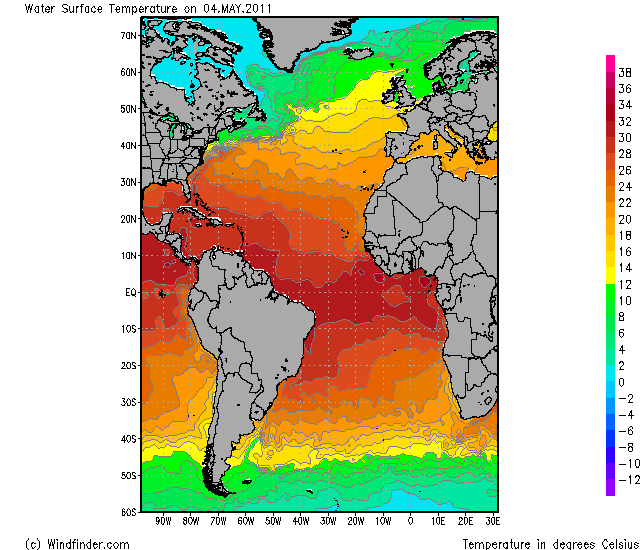
TD Three
Een collega voer afgelopen lente (precies rond dit moment) over de evenaar/langs de kaap verden, en toen was het water daar net boven de 30, dat was bijzonder. Toen ik hetzelfde tripje afgelopen oktober uitvoerde, was er eentje die wedde dat we de 30 wel zouden aantikken. Die heeft dus een ontbijt in volle duikuitrusting gedaan.quote:Op donderdag 5 mei 2011 18:53 schreef aloa het volgende:
[..]
En het is nog maar mei. Water is volgens mij vroeg op temperatuur.
[ afbeelding ]
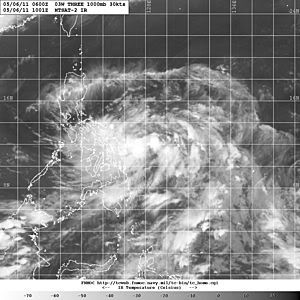
An early-season tropical depression has formed east of the Philippines. Very heavy rain has begun to fall over central and northern areas of the nation and will continue to do so over the next several days.
Nearly 10 inches (250 mm) of rain has already fallen at Catarman as the center of the tropical depression remained just off the east coast.
The depression was moving slowly to the northwest at around 5 mph. Some slow strengthening into a tropical storm is likely over the next day or two before the center of the storm passes over northern Luzon Island in the northern Philippines early next week.
The main impact from this system will be localized flooding and strong winds, especially across eastern Luzon and eastern Visayas.
Daily rainfall totals can exceed 5 inches (125 mm) in many areas of central and northern Philippines, and could exceed 10 inches (250 mm) in a few locations. Widespread flooding will result, and could produce deadly mudslides.
Wind gusts can exceed 60 mph (95 kph) at the time of landfall over eastern Luzon Island. Landfall is expected late morning or early in the afternoon Monday, local time.
Accuweather
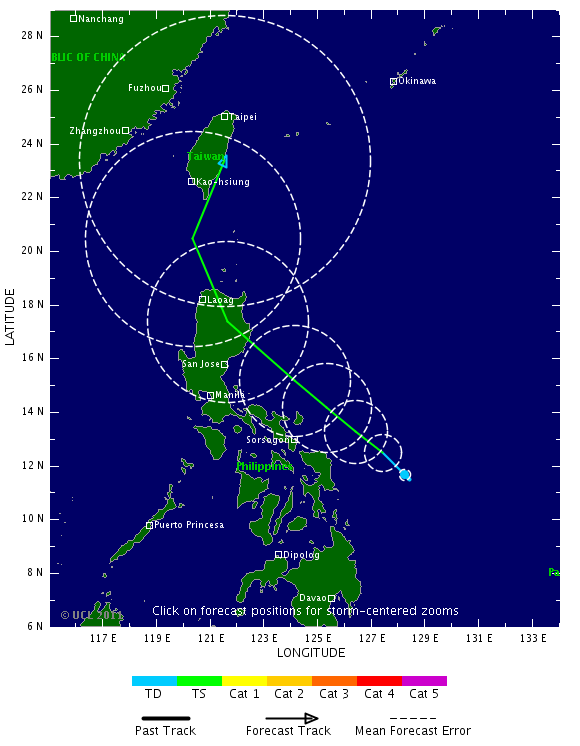
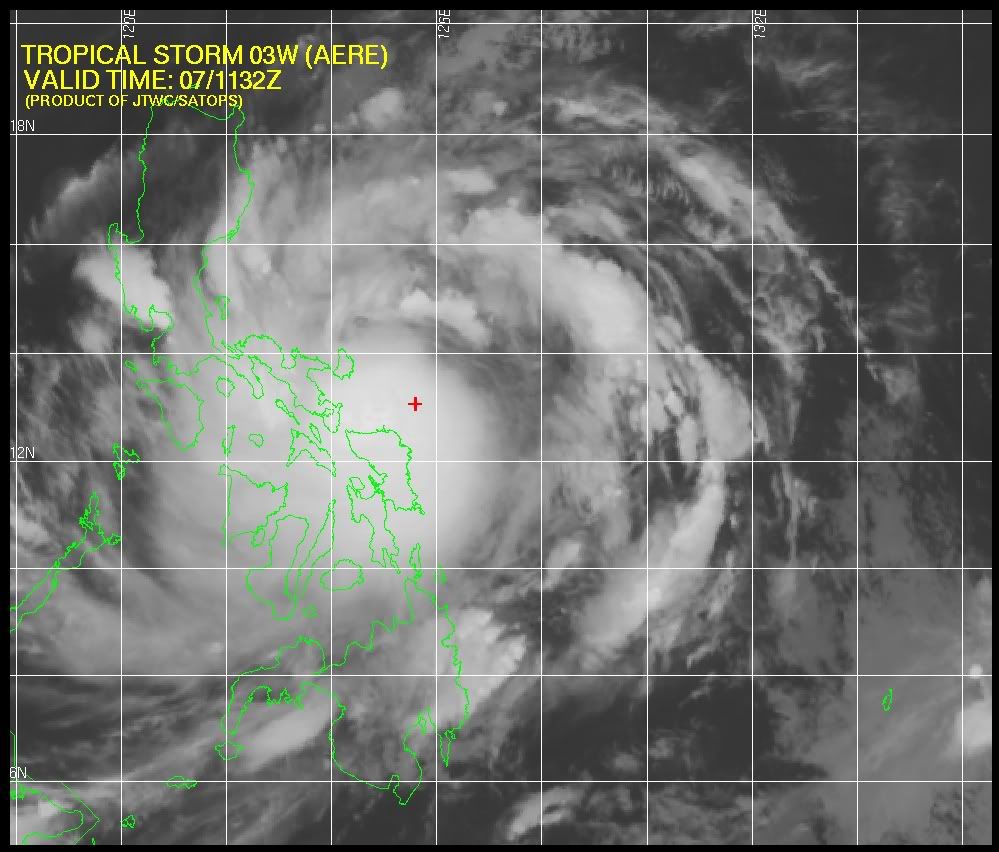
De tropische storm Aere heeft vandaag zeker negen levens geëist in het oosten van de Filipijnen. Vanwege de zware regenval en landverschuivingen zijn meer dan honderdduizend mensen geëvacueerd. Dat hebben de lokale autoriteiten bekendgemaakt.
Aere is de eerste grote storm dit jaar die het Zuidoost-Aziatische land aandoet. De storm trekt de komende uren naar Luzon, het grote eiland in het noorden. (anp/adv)
hln
(Novum/AP) - MANILLA - De tropische storm Aere heeft in het noordoosten van de Filipijnen aan zeker elf mensen, onder wie een baby, het leven gekost. Meer dan honderdduizend mensen zijn op de vlucht geslagen uit angst voor aardverschuivingen.
De storm kwam zondag in de provincie Catanduanes aan land en bereikte windsnelheden tot 85 kilometer per uur. Op sommige plekken werden windstoten van meer dan 100 kilometer per uur gemeten.
Het noodweer veroorzaakte aardverschuivingen en overstromingen en zorgde voor stroomstoringen in verschillende steden. Bijna vijfduizend forenzen strandden in havens, omdat veerboten niet uitvoeren. Een groot aantal wegen was gesloten, omdat ze waren overstroomd of omdat er aardverschuivingen dreigden. Tevens werd een aantal binnenlandse vluchten geannuleerd.
De storm verplaatst zich naar verwachting richting het noordwesten om de archipel vervolgens te verlaten, aldus de meteorologische dienst.
nieuws.nl
MANILA (ANP/EFE) – Het dodental als gevolg van de tropische storm Aere op de Filipijnen is opgelopen tot dertien. Onder de slachtoffers zijn drie kinderen. Twee mensen worden vermist. Dat hebben de autoriteiten in het Aziatische land maandag gemeld. Eerder was melding gemaakt van negen doden.
De storm heeft vooral het oosten van de eilandengroep zwaar getroffen. Meer dan honderdduizend mensen daar zijn uit hun huizen verdreven door overstromingen en aardverschuivingen.
Het orkaanseizoen in Zuidoost-Azië begint doorgaans in mei of juni en houdt aan tot en met oktober of november. Gemiddeld krijgen de Filipijnen in die periode te maken met vijftien tot twintig gevaarlijke tyfonen.
bron

This graphic displays the total number of tropical storms, as well as the number of those forecast to develop into typhoons and super typhoons, expected in the western North Pacific Basin in 2011 compared to the average number per year.
De tropische storm Aere heeft 24 levens geëist op de Filipijnen. Dat hebben de autoriteiten laten weten.
De storm geselde de Filipijnen zondag en ging gepaard met stortregens.
Op het grote eiland Luzon moesten bijna 70.000 mensen hun huizen verlaten. Er is zware schade aan de landbouw: een eerste schatting spreekt van 2,7 miljoen dollar, of zo'n 1,87 miljoen euro.
De Filipijnen krijgen elk jaar een twintigtal tyfoons te verwerken. Sommigen richten veel schade aan en zorgen ook voor doden. (belga/vsv)
hln
[ Bericht 1% gewijzigd door #ANONIEM op 11-05-2011 09:20:54 ]
Dit jaar worden er 15 stormen verwacht waarvan er 9 een naam zullen krijgen. 4 van deze stormen bereiken volgens de verwachting de major hurricane status. (Categorie 3 of meer)
quote:Hurricane Season Starts Sunday in Eastern Pacific
"Fifteen named storms would more than double the total from last year"
Sunday marks the official start of the 2011 hurricane season in the Eastern Pacific, a season which is expected to exceed the amount of named tropical systems from last year by twofold.
AccuWeather.com meteorologists are predicting an average number of tropical systems to develop in the Eastern Pacific this year.
The basin averages 15 tropical storms each season. Out of those, nine become hurricanes, with four reaching major hurricane status.
Fifteen named storms would more than double the total from last year. Only seven named storms formed in the Eastern Pacific in 2010, with three reaching hurricane status.
"Last year was... about as quiet as it can get," stated AccuWeather.com Western Expert Meteorologist Ken Clark.
"A strengthening La Niña can be partially attributed to the lack of tropical storms [last year]," reported AccuWeather.com Staff Writer Gina Cherundolo in her recap of the 2010 Eastern Pacific hurricane season.
A weakening La Niña, on the other hand, will bring the basin's hurricane season back to normal this year.
"The water [in the Eastern Pacific] will steadily warm, which will lead to lower pressure," stated AccuWeather.com Expert Senior Meteorologist Bob Smerbeck. Lower pressure will then open the door for the development of tropical systems.
"Since the pressure will remain slightly above average early in the season, we are not expecting a quick start," Smerbeck added.
There are clusters of thunderstorms currently streaming across the Eastern Pacific, but none show signs of future development.
The first tropical storm to develop in the Eastern Pacific this year will acquire the name "Adrian."
Hurricane season in the Eastern Pacific will run until November 30, which coincides with the end of hurricane season in the Atlantic Basin.
The 2011 Atlantic Basin hurricane season does not officially begin until June 1. The earlier start time in the Eastern Pacific reflects how this basin typically turns active faster than the Atlantic.
On average, June 9 is when the first tropical storm is named in the Eastern Pacific. In the Atlantic, that date is July 10.
Hurricanes typically develop much quicker in the Eastern Pacific than the Atlantic. The average first date for a hurricane to form in the Eastern Pacific is June 24, but not until August 14 in the Atlantic.
Despite the Eastern Pacific being rather active, the majority of tropical storms and hurricanes never threaten land. A typical Eastern Pacific tropical system will head westward into open and progressively cooler ocean waters, dissipating in the process.
Occasionally, tropical storms and hurricanes will target Mexico and parts of Central America. Though less frequently, some tropical systems have threatened Hawaii. Hurricane Felicia approached Hawaii in 2009, but weakened below tropical depression status prior to reaching the islands.
Since records began, the cool water that lies offshore of California has protected the state from direct hits by tropical storms and hurricanes in every year but one. In September 1939, an unnamed tropical storm pressed onshore at Long Beach, California with maximum sustained winds of 50 mph.
Two other storms have moved into Arizona at tropical storm strength. The first was once-Hurricane Joanne in October 1972, followed by once-Hurricane Kathleen in September 1976.
No systems have reached the Southwest at hurricane strength.
quote:Tropische storm Aere eist 31 levens op Filipijnen
De tropische storm Aere heeft op de Filipijnen al 31 mensen het leven gekost, zo hebben de autoriteiten laten weten.
De storm geselde de Filipijnen afgelopen zondag en ging gepaard met stortregens. Op het grote eiland Luzon moesten bijna 70.000 mensen hun huizen verlaten.
De Filipijnen krijgen elk jaar een twintigtal taifoens te verwerken. Sommige richten veel schade aan en zorgen ook voor doden.
hln
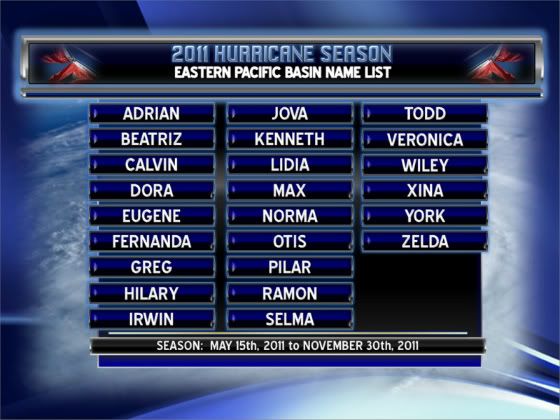
ik dacht meer aan die ene, met MAXimum windspeeds up to 300km/uquote:Op maandag 16 mei 2011 00:51 schreef SoldMayor het volgende:
GREG en IRWIN klinken echt als cat.5 orkanen.
wundergroundquote:First tropical wave of the year over the Atlantic
The first tropical wave of 2011 is now over the tropical Atlantic near 6°N 46°W, according to the latest Atlantic Tropical Weather Discussion. The wave will bring heavy rain to the northeast coast of South America over the next two days, but is too far south to be a threat to develop into a tropical depression. The Atlantic hurricane season is just two weeks away, and the Eastern Pacific hurricane season began yesterday. So far, the models are not predicting any tropical storm development in the East Pacific or Atlantic over the next six days.

quote:Tropical Storm Aere formed in early May 2011, just east of the Philippines. Channel News Asia and Unisys Weather reported that the storm made landfall on May 8. By May 13, the Philippine government reported that the storm’s death toll in that nation stood at 31. Besides strong winds, the storm brought torrential rains that caused flash floods and landslides.
A color-coded image was created using data from NASA's Tropical Rainfall Measuring Mission (TRMM) satellite by Jesse Allen at NASA's Goddard Space Flight Center, Greenbelt, Md. The image shows estimated rainfall amounts from May 5 to 12, 2011. In the image, the lowest rainfall amounts (less than 75 millimeters, or 3 inches) appear in pale green, and the heaviest amounts (more than 600 millimeters, or 24 inches) appear in dark blue. The heaviest rainfall forms a kind of bull’s eye over the easternmost islands, southeast of Manila. Rainfall amounts fall farther away from this area, but rain still affects a broad swath across the central Philippines.
Over the course of its existence, Tropical Storm Aere traveled in a large arc. The storm passed over the northern Philippines, and passed east of Taiwan before curving back toward the northeast. Aere dissipated south of Japan.
Tropical storms and damaging rains frequently affect the Philippines, Typhoon Megi, Tropical Storm Conson, and Tropical Storm Ketsana being just a few of the storms to cause widespread damage. Torrential rains can also affect the islands even without the influence of named storms, such as heavy rains in January 2011.
Expect a busy Atlantic hurricane season this year, with sixteen named storms, say Pennsylvania State University (PSU) hurricane scientists Michael Mann and Michael Kozar. Their annual Atlantic hurricane season forecast issued on May 16 calls for 12 - 20 named storms this season, which starts June 1 and runs until November 30. An average season has 10 - 11 named storms. Their prediction was made using statistics of how past hurricane seasons have behaved in response to sea surface temperatures (SSTs), the El Niño/La Niña oscillation, the North Atlantic Oscillation (NAO), and other factors. This year's forecast is primarily based on three factors:
1) The current above-average sea surface temperatures in the Atlantic Main Development Region (MDR) for hurricanes, from Central America to the coast of Africa between 10°C and 20°C North latitude, will continue into the main part of hurricane season;
2) The fading La Niña event in the Eastern Pacific Ocean will be replaced by neutral El Niño/La Niña conditions;
3) The North Atlantic Oscillation (NAO) will be near average during hurricane season.

Figure 1. Hurricane Igor of 2010 as seen from the International Space Station.
The PSU team will also be making a new experimental forecast based not on the absolute MDR sea surface temperatures, but on difference between the MDR SST and ocean temperatures over the rest of the globe's tropical oceans. Some research has suggested that Atlantic hurricane activity is greater when this relative difference in SSTs is high, not necessarily when the absolute MDR SST is high (in other words, if all the world's tropical oceans have record high SSTs, we wouldn't get an unusually active Atlantic hurricane season, even with record warm SSTs in the Atlantic.) This new experimental forecast is predicting higher activity: 19 named storms in the Atlantic this year.
The PSU team has been making Atlantic hurricane season forecasts since 2007, and these predictions have done pretty well:
2007 prediction: 15 Actual: 15
2009 prediction: 12.5 Actual: 9
2010 prediction: 23 Actual: 19
NOAA will be issuing their annual pre-season Atlantic hurricane season forecast at 11:30am on Thursday, and I'll make a post on that Thursday afternoon. Tropical Storm Risk, Inc. (TSR) issues their pre-season forecast on May 24, and Colorado State University issues theirs on June 1.
Wunderground
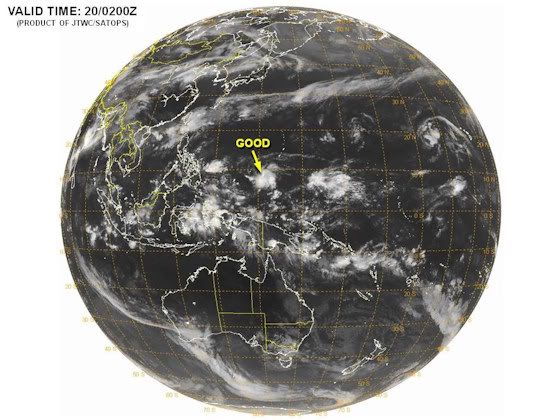
Nieuwe invest in de Indian Ocean.
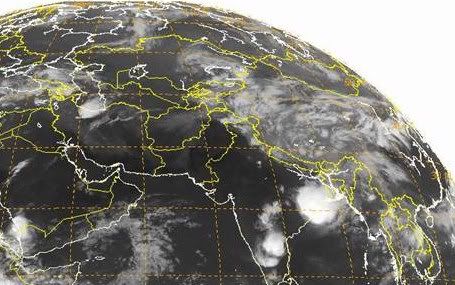
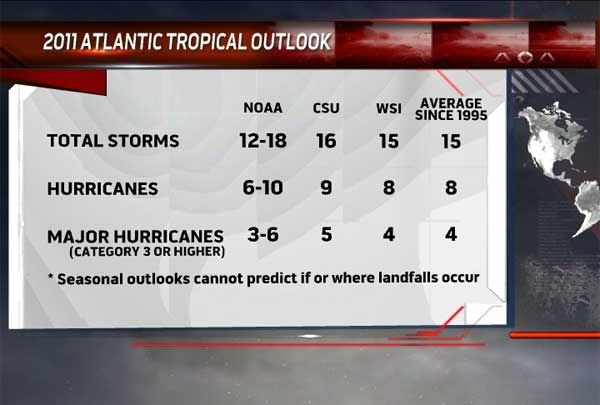
"The storm... should be able to strengthen into a typhoon."

Newly formed Tropical Storm 04W may pose threats for both the northern Philippines and eventually Japan.
As of Friday morning, EDT, the center of Tropical Storm 04W (which had yet to be given a name) was located approximately 200 miles east-southeast of the small island of Yap.
Due to light winds aloft, this storm will move very slowly over the next several days. The center of the storm will pass over or very close to Yap Sunday, EDT.
Early next week, the storm will be over the warm waters of the Philippine Sea, and should be able to strengthen into a typhoon.
The future track of the storm remains quite uncertain through the middle to end of next week. An upper-air trough of low pressure will dive southeastward over southeastern China. This upper-air trough will eventually steer the storm to the northeast.
If the trough moves in fast enough, the storm could be steered on a path that puts both the Philippines and eventually Japan out of harm's way.
However, if this trough is slower to dive southeastward, the storm may pass close to the northern Philippines, and possibly get steered close enough to Japan to affect that country.
Any effect on the Philippines would not occur until the middle of next week at the earliest, with any possible effects on Japan occurring late in the week.
Accuweather
Onderstaand kaartje is voor donderdag, dus voor hetzelfde krijgt de Filipijnen wel een voltreffer.

Wundergroundquote:First typhoon of 2011 coming?
In the Northwest Pacific, Tropical Storm Four has formed, and appears poised to become the first typhoon of 2011 by early next week. The storm is expected to head west-northwest or northwest towards the Philippines. While the GFS model predicts Tropical Storm Four will miss the Philippines and recurve northwards towards Japan late next week, it is too early to be confident of this forecast.
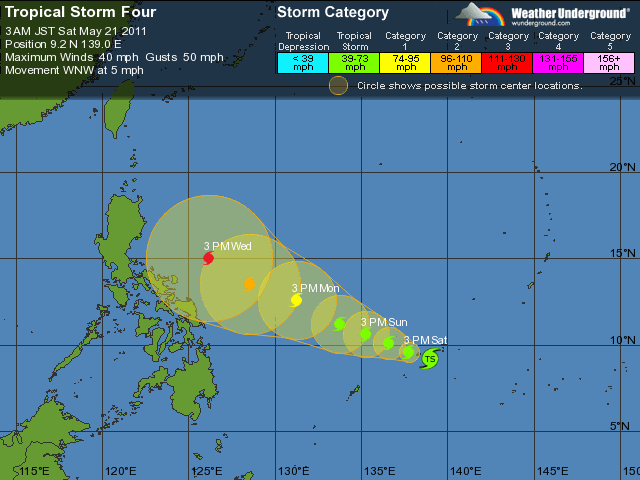

GFS kaart van zaterdag 28 mei.
De orkaan ligt dan dicht bij Japan

[ Bericht 10% gewijzigd door #ANONIEM op 21-05-2011 19:37:35 ]
Inderdaad ja. Dat is ook 120 uur verder, dus kan nog veel veranderen. Hoogste windsnelheid wordt geschat op 212 km/uur (categorie4). De watertemperatuur is rond de 30 graden in dit gebied.quote:Op zaterdag 21 mei 2011 23:19 schreef Frutsel het volgende:
Lijkt er op dat ie toch dichter bij de kust komt dan eerst?
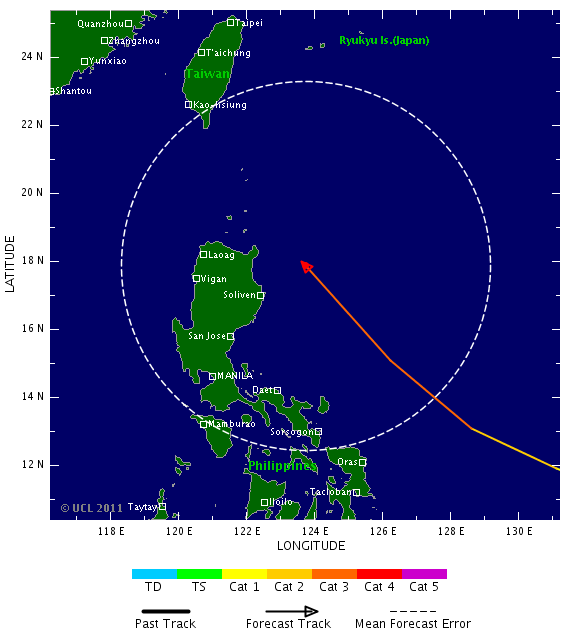
Draait hij nu nog verder weg of krijgt Taiwan de volle laag?
Volgens GFS trekt ie naar het noorden van de Filipijnen en is daarna Taiwan aan de beurt.quote:Op zondag 22 mei 2011 12:16 schreef Frutsel het volgende:
inmiddels hernoemd naar Songda
Draait hij nu nog verder weg of krijgt Taiwan de volle laag?
Maar is nog ver weg.
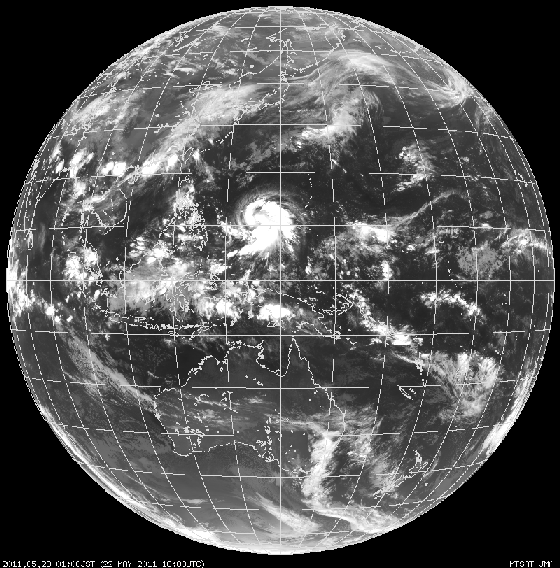
Japan bedoel je?quote:Op zondag 22 mei 2011 22:07 schreef Jumparound het volgende:
dat kunnen ze nog wel hebben daar, een orkaantje...
Volgens de kaarten krijgt Japan ook te maken met deze orkaan. Zeewatertemperatuur is daar rond de 20 graden en dat is te koud voor een tropische orkaan. Japan krijgt wel te maken met storm en neerslag.
Tyfoon op weg naar de Filipijnen/Taiwan

Invest in de Atlantische Oceaan heeft 20% kans...
Wundergroundquote:an early start to hurricane season?
The Atlantic hurricane season officially begin on Wednesday, June 1, and recent computer model runs predict that we may have some early-season action in the Central Caribbean Sea to coincide with the start of this year's season. The GFS, NOGAPS, and ECMWF models have all indicated in some of their recent runs that a tropical disturbance may form between Jamaica and Central America sometime in the May 31 - June 2 time frame, as a lobe of the Eastern Pacific Intertropical Convergence Zone (ITCZ) pushes across Central America into the Caribbean. Up until now, wind shear has been too high to allow tropical storm formation in the Caribbean, due to the presence of the Subtropical Jet Stream. However, this jet is expected to push northwards over Cuba over the coming week, allowing a region of low wind shear to develop over most of the Caribbean. Water temperatures in the Central Caribbean are about 1°C above average, 29°C, which is plenty warm enough to support development of a tropical storm. The main impediment to development will probably be lack of spin, as we don't have any African tropical waves that are expected to enter the Caribbean Sea next week, to help get things spinning. Stay tuned.
Na het meest dodelijke tornadoseizoen in zestig jaar krijgen de Verenigde Staten te maken met nog meer natuurgeweld. De Amerikaanse meteorologische dienst waarschuwt voor een "buitengewoon orkaanseizoen".
Elk jaar doet de National Oceanic and Atmospheric Administration (NOAA) voorspellingen over het orkaanseizoen, dat in juni begint. Dit jaar zijn die vooruitzichten zorgwekkend. De dienst verwacht drie tot zes grote orkanen van categorie 3, 4 of 5, met windsnelheden van 180 kilometer per uur of meer.
Ook vorig jaar waarschuwde de NOAA voor orkaangeweld, maar toen kwamen de VS goed weg. "De Verenigde Staten hadden geluk", zegt Jane Lubchenco van de NOAA. "Winden duwden de meeste tropische stormen en orkanen weg van onze kust. Maar we kunnen niet op geluk blijven rekenen. We moeten voorbereid zijn, en zeker na deze voorspellingen."
Waarschuwing
De NOAA wijt de hogere kans op orkanen onder meer aan het warmere water in de Atlantische Oceaan en aan de naweeën van het klimaatfenomeen La Niña.
"De tornado's die het zuiden van het land getroffen hebben en de vele overstromingen die we deze lente gezien hebben, moeten een waarschuwing zijn dat rampen overal en op elk moment kunnen toeslaan", zegt Craig Fugate van het Amerikaans Bureau voor Rampenbestrijding. Hij drukt de inwoners van de risicogebieden op het hart om zich goed voor te bereiden en noodscenario's voor hun gezin klaar te hebben. (ips/gb)
hln
Als die systemen onze kant op komen dan hoef ik dit jaar geen zwembad te gaan halen...
Natuurlijk kan zulke systemen voor mooi weer zorgen maar voor nu heb ik mijn twijfels hieraan..
Anyway we gaan het allemaal op de voet volgen
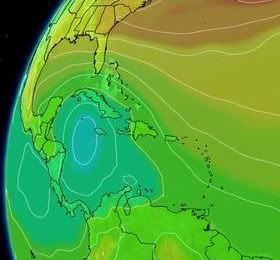
Meestal duurt het dan nog een aantal weken voordat de eerste serieuze storm ontstaat.quote:
Kans is nog steeds aanwezig dat het gebiedje in de Caribische zee iets gaat worden.
Accuweather heeft ook een voorspelling uitgebracht. Men voorspelt 15 tropische stormen die een naam krijgen. Hiervan gaan er 8 de orkaan status halen en 4 zullen de status krijgen van 'Major Hurricane' (cat 3 of meer).

Verder verwacht men meer impact op het vaste land dan vorig jaar.
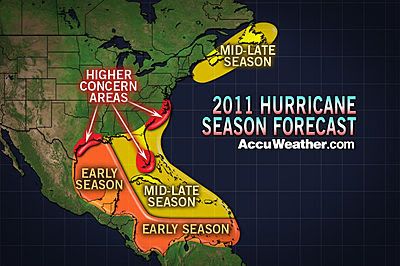
Al een aantal dagen lijkt het erop dat er een storing gaat ontstaan in de Caribische zee. Het is afwachten wat dit gaat worden. Al groeit dit systeem niet uit tot een tropische depressie of meer, het kan nog wel voor de nodige hoeveelheden regen zorgen.
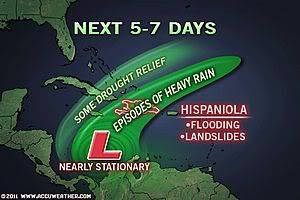
Volgens de kaarten van GFS gaat dit systeem zich langzaam ontwikkelen en kan in eerste instantie voor overlast gaan zorgen langs de westkust van India.
Dit systeem lijkt momenteel de meeste kans te hebben om uit te gaan groeien tot een flinke storm.
Orkanen komen hier niet veel voor, het gemiddelde staat op 1 per jaar.
Elk jaar wordt er aan het eind van de lente een verwachting opgesteld voor het komende orkaanseizoen in het Caribisch gebied en het tropische deel van de Atlantische Oceaan. Vorig jaar werd een zwaar orkaanseizoen verwacht en uiteindelijk werden 19 tropische stormen geteld. We moeten terug naar 2005 voor een nog zwaarder seizoen. Dat was overigens het jaar dat Katrina de Amerikaanse stad New Orleans trof. Inmiddels zijn de verwachtingen voor 2011 uitgegeven en vandaag behandelen we er drie. We bekijken de vooruitblik van de NOAA, WCS en de Britse weerdienst.

Afwijking in zeewatertemperatuur tussen vorig jaar en dit jaar. Het zeewater is iets minder warm waardoor tropische storingen niet zo snel tot ontwikkeling kunnen komen zoals vorig jaar het geval was. (Bron: WCS)
NOAA
De NOAA is de nationale weerdienst in Amerika en maakt elk jaar seizoensverwachtingen. In de zomerverwachting wordt ook altijd gekeken naar het komende orkaanseizoen. De NOAA verwacht een bovennormaal seizoen met 12 tot 18 tropische stormen waarvan 6 tot 10 zullen uitgroeien tot een orkaan. 3 tot 6 van deze orkanen kunnen uitgroeien tot een categorie 3, 4 of 5 orkaan. Wanneer en waar ze zullen toeslaan, is moeilijk aan te geven. Dat is bij orkanen pas op het laatste moment duidelijk. Feit is wel dat vorig jaar de Amerikaanse oostkust geluk gehad heeft. De meeste tropische stormen (in totaal ontstonden er 19) bleven op volle zee en slechts 1 orkaan (Bonnie) maakte landfall langs de oostkust. Of de orkanen dit jaar ook op ruime afstand van de kust blijven, moet nog maar blijken. Ondanks dat er iets minder stormen worden verwacht, gaat men er vanuit dat de impact voor de Amerikaanse oostkust dit jaar groter zal zijn.
Sinds 1995 zitten we in een regelmatig terugkerende situatie waarbij hogere watertemperaturen en een bepaald stromingspatroon boven het tropische deel van de Atlantische Oceaan het ontstaan van tropische stormen “makkelijker” maken. Deze cyclus duurt een aantal jaren, maar we zitten er nu dus nog middenin. Daarnaast zien we nu dat de watertemperaturen ongeveer 1 graad warmer zijn dan normaal in deze tijd van het jaar. Tenslotte is La Niña vrijwel voorbij, maar in de hogere luchtlagen is de komende tijd nog een afname van de windschering (verandering in windsterkte en – richting met de hoogte) zichtbaar zodat tropische stormen makkelijker kunnen ontstaan.
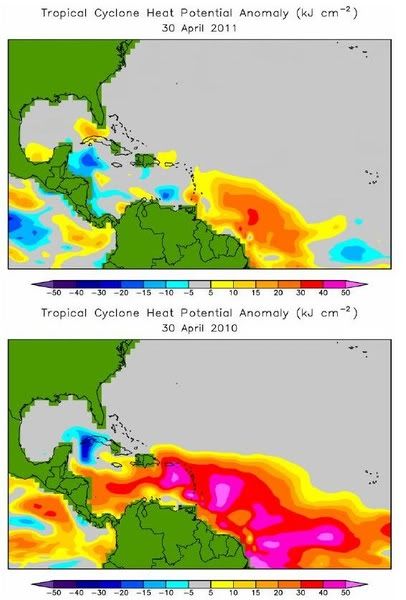
De "Tropical Cyclone Heat Potential (TCHP) op 30 april 2011 (boven) en 2010 (onder). Op basis van deze waarden verwacht WCS dat er iets minder tropische stormen ontstaan in vergelijking tot vorig jaar. Overigens kan het zijn dat de watertemperatuur de komende weken verder oploopt dan dat men nu verwacht. In dat geval kan het aantal stormen ook hoger uitkomen. (Bron: WCS)
WCS
De World Climate Service (onderdeel van de Meteo Group) verwacht ook een actief seizoen, maar niet zo actief als vorig jaar. Men verwacht 13 tot 17 tropische stormen waarvan 6 tot 9 zullen uitgroeien tot een orkaan en 3 of 4 zelfs een orkaan van de zwaardere categorie worden.
Als belangrijkste reden geeft WCS aan dat de zeewatertemperatuur hoger is dan normaal. Toch hebben recente studies aangetoond dat het niet voldoende is om enkel naar de temperatuur van het zeewateroppervlak te kijken. Een dunne laag met warm zeewater kan bij menging door wind of stroming weer heel snel afkoelen. Belangrijker is om te kijken naar de aanwezige warmte-energie in een dikkere kolom oceaanwater. De “Tropical Cyclone Heat Potential” (TCHP) was eind april in een groot deel van het Caribisch gebied (sterk) positief terwijl dat een jaar eerder niet het geval was.

Op 16 september 2010 waren er drie orkanen actief boven de Atlantische Oceaan en de Caribische zee. Het ging om Karl, Igor en Julia. (Bron: NOAA)
UKMO
De Britse weerdienst, The UK Met Office maakt sinds een paar jaar ook verwachtingen. Dat is niet omdat de restanten van tropische stormen uiteindelijk ook in Europa voor onstuimig weer kunnen zorgen, maar vanwege het simpele feit dat orkanen in de VS grote invloed hebben in de hele wereld. Denk daarbij aan de wereldvoedselmarkt en de soms snelle veranderingen in olieprijzen.
De UKMO verwacht ongeveer 13 tropische stormen met een 70% kans dat het aantal tussen 10 en 17 komt te liggen. Daarmee is de UKMO iets minder scheutig in vergelijking tot de verwachting van de NOAA en WCS. De UKMO kijkt niet alleen naar het aantal stormen, men probeert ook een beeld te krijgen van de levensduur en intensiteit van de stormen. Voor dit jaar verwacht men een Accumulated Cyclone Energy index (ACE) van 151 met een 70% kans dat de index tussen 89 tot 212 komt te liggen. Dit is ver boven het gemiddelde van 104 (gebasseerd op de periode 1980-2010).
Hoeveel tropische stormen, orkanen en zware orkanen er dit jaar uiteindelijk in de boeken worden bijgeschreven weten we pas eind november. Op dat moment is het seizoen van 2011 afgelopen al hebben we in 2005 gezien dat zelfs in december nog enkele stormen tot ontwikkeling kwamen.
Bron: Meteo Consult, NOAA, WorldClimateService, UKMO

Torrential rain and strong winds will strike western India during the next several days as the leading edge of the Summer Monsoon spreads northward.
Westernmost India, from Kollam north to Mumbai, will have heavy rain, locally amounting to between 12 and 24 inches (about 30 to 60 cm), which could trigger significant flooding.
Low pressure helping to usher seasonal rains of the Summer, or South West, Monsoon northward will drift northward near the west coast through early next week. This low could ultimately intensify into a tropical cyclone, bringing the additional threat of damaging winds along its path.
According to the India Department of Meteorology (IMD), onset of the South West Monsoon was officially declared in the southwestern state of Kerala as of May 29. The onset thus happened a little earlier than the historical average date of June 1.
As of June 2, IMD showed further northward advance of the Monsoon into the state of Karnataka, where it also happened a few days earlier than usual.
In Kerala, normally the first of India's states to feel the full weight of the seasonal rains, rainfall has already exceeded 12 inches, or about 30 cm, in Kochi.

Super Cyclonic Storm Gonu east of Oman on June 4, 2007. NASA Image/Jeff Schmaltz
If a tropical cyclone were to emerge from the low off western India, it would in no way be unprecedented. Indeed, the month of June occasionally sees the spinning up of a cyclone over the Arabian Sea.
Perhaps the most extreme example of such a storm is that of Super Cyclonic Storm Gonu, which lived out a devastating life cycle during the first week of June 2007. Gonu clipped eastern Oman, making it the strongest known storm ever strike Arabia. Gonu also made a destructive, final landfall upon southeastern Iran.
Accuweather
In 2007 werd dit gebied getroffen door de cycloon Gonu. In Wikipedia is te lezen dat dit de zwaarste tropische cycloon was die ooit in de Arabische Zee is waargenomen en samen met een andere tropische cycloon de zwaarste die ooit in het hele bassin van de noordelijke Indische Oceaan is waargenomen.
Het is afwachten hoe deze cycloon zich gaat ontwikkelen.

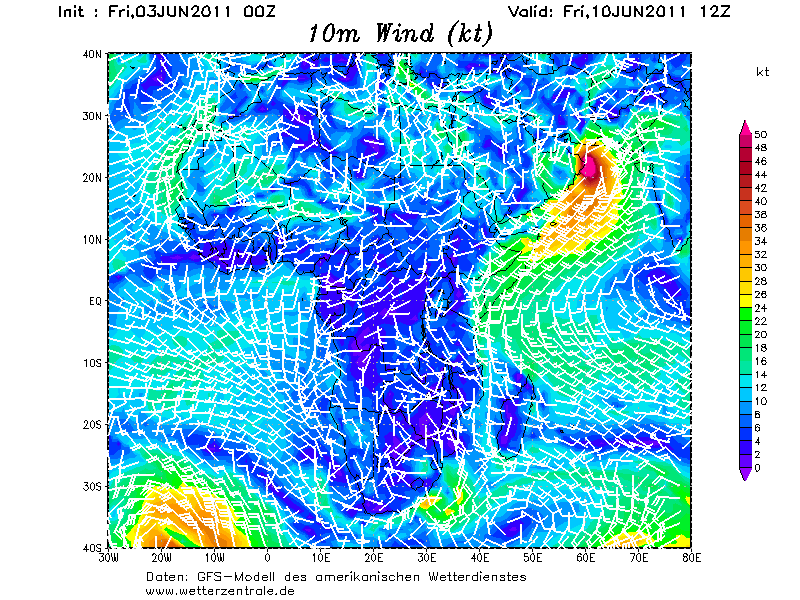

quote:THERE HAS BEEN LITTLE CHANGE TO THUNDERSTORM ACTIVITY ASSOCIATED
WITH A BROAD AREA OF LOW PRESSURE CENTERED ROUGHLY A HUNDRED MILES
SOUTH OF JAMAICA. ENVIRONMENTAL CONDITIONS ARE GENERALLY CONDUCIVE
FOR SOME DEVELOPMENT...AND THERE IS A MEDIUM CHANCE...30 PERCENT...
OF THIS SYSTEM BECOMING A TROPICAL CYCLONE DURING THE NEXT 48
HOURS. HEAVY RAINS COULD CAUSE FLASH FLOODING AND MUD SLIDES OVER
PORTIONS OF HAITI...THE DOMINICAN REPUBLIC...JAMAICA...AND EXTREME
SOUTHEASTERN CUBA OVER THE NEXT COUPLE OF DAYS AS THE LOW REMAINS
NEARLY STATIONARY.
Zat me net af te vragen waarom ze het altijd invest 93 en 94 noemen daar in de Atlantic... ik heb het ooit geweten maar weet het niet meer, Ik word oud
Hoezo altijd?quote:Op zaterdag 4 juni 2011 16:34 schreef Frutsel het volgende:
Afwachten inderdaad... Ze komen niet vaak voor daar. Misschien dat ze wat piratenbootjes laten omslaan
Zat me net af te vragen waarom ze het altijd invest 93 en 94 noemen daar in de Atlantic... ik heb het ooit geweten maar weet het niet meer, Ik word oud
Elk seizoen begint bij invest 90... Iedereen keer waneer er een gebied komt dat mogelijk een depressie kan worden krijgt dan een nieuwe nummer 91, 92, 93, 94, tot invest 99L.quote:Op zaterdag 4 juni 2011 16:37 schreef Frutsel het volgende:
Volgens mij als ze eenmaal weg zijn en er duiken nieuwe op noemen ze ze ook weer invest 93 of 94 ?
Daarna begint het gewoon weer opnieuw. Komt er naar invest 99L weer een nieuw gebied dan wordt dat weer invest 90.

In de Atlantische Oceaan is de invest opgehoogd naar 40%. Er is een kans dat dit Arlene gaat worden.
quote:Tropics Activating in Both Caribbean, East Pacific
"The formation of the first named storm in both...basins in the same week would be rather unusual."
The first depression or named storm of this year may not just come to life in the Caribbean this week, but also the eastern Pacific Ocean.
The AccuWeather.com Hurricane Center is busy as the workweek begins, closely monitoring two areas of low pressure for tropical development.
One low is located in the central Caribbean, roughly 175 miles south of Grand Cayman. The other is spinning about 450 miles south of Acapulco, Mexico, in the eastern Pacific.
Both lows have become better organized over the past 36 hours as each churns over warm water.
Due to being in an environment that is more conducive to development, the low in the eastern Pacific will likely win the race and become a tropical depression before the low in the Caribbean.
The eastern Pacific low could strengthen into a depression within the next 24 hours, then should further intensify into Tropical Storm Adrian. Latest computer models even show the low reaching hurricane strength.
The projected path of the strengthening low keeps it over the open waters of the eastern Pacific. However, a track toward the western tip of central Mexico cannot be ruled out.
As wind shear (strong winds high in the atmosphere) lessens, the low in the Caribbean may eventually follow suit and strengthen into a tropical depression this week.
If the low can then continue to strengthen, it would acquire the name "Arlene."
At this point, a range of solutions exists as to where the low will track this week. Some signs point toward the low heading into the south-central Gulf of Mexico, while a track directed at either eastern Cuba or Hispaniola is possible.
Regardless of what the future holds for the low, flooding rain and mudslides poses an immediate danger to Jamaica, southeastern Cuba and Hispaniola.
The formation of the first named storm in both the Atlantic and Eastern Pacific basins in the same week would be rather unusual.
On average, June 9 is when the first tropical storm is named in the Eastern Pacific. In the Atlantic, that date is July 10.
bron: Accuweather
50% inmiddelsquote:Op maandag 6 juni 2011 11:45 schreef aloa het volgende:
In de Atlantische Oceaan is de invest opgehoogd naar 40%. Er is een kans dat dit Arlene gaat worden.
[..]
quote:Evacuaties door noodweer in Dominicaanse Republiek
AMSTERDAM - Meer dan vierduizend mensen zijn in de Dominicaanse Republiek geëvacueerd vanwege noodweer ten zuiden van Jamaica. Hierdoor wordt de Dominicaanse Republiek geteisterd door zware regenbuien.
Twaalf huizen zijn door overstromingen vernield. Nog eens 540 woningen staan blank. Ook in Haïti, Jamaica en Puerto Rico leidde het noodweer tot overstromingen.
De afgelopen dagen zijn er in de Dominicaanse Republiek één en in Haïti twee doden gevallen.
nu.nl
[ Bericht 5% gewijzigd door #ANONIEM op 06-06-2011 22:20:52 ]
http://earthobservatory.nasa.gov/IOTD/view.php?id=50854
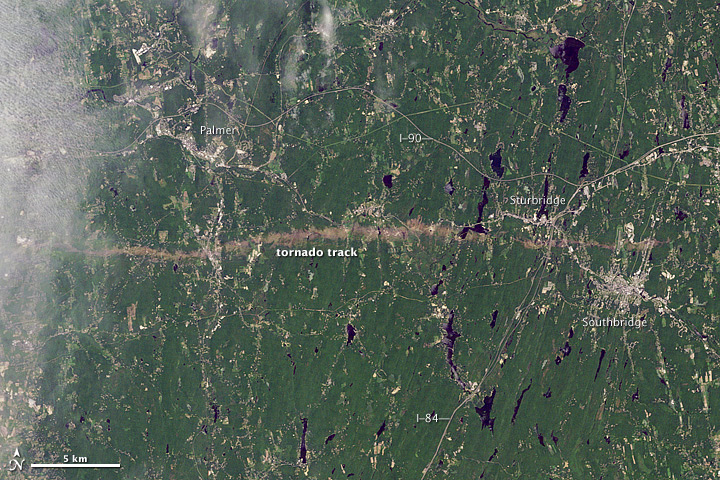
dan verplaats je hem toch?quote:
Het is nu nog een tropische depressie. Op de schaal van beaufort zal het nu amper een windkracht 7 halen. Naar verwachting zal het vrijdag een orkaan zijn en geen bedreiging vormen voor land.
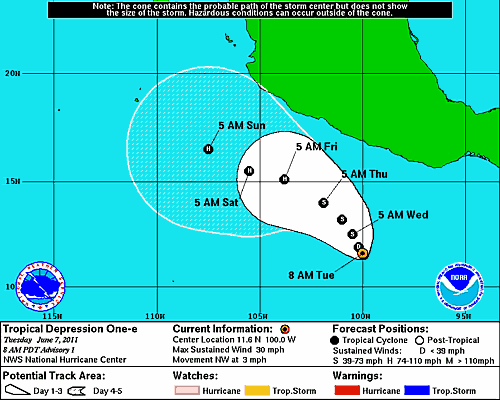
Dat kan een mod nietquote:
Volgens de laatste run (12Z) zal Pakistan een voltreffer krijgen. Vorig jaar vielen hier nog zo'n 2000 doden door overstromingen en raakten miljoenen mensen dakloos.
Overstromingen Pakistan: 1750 doden - Grootste ramp ooit
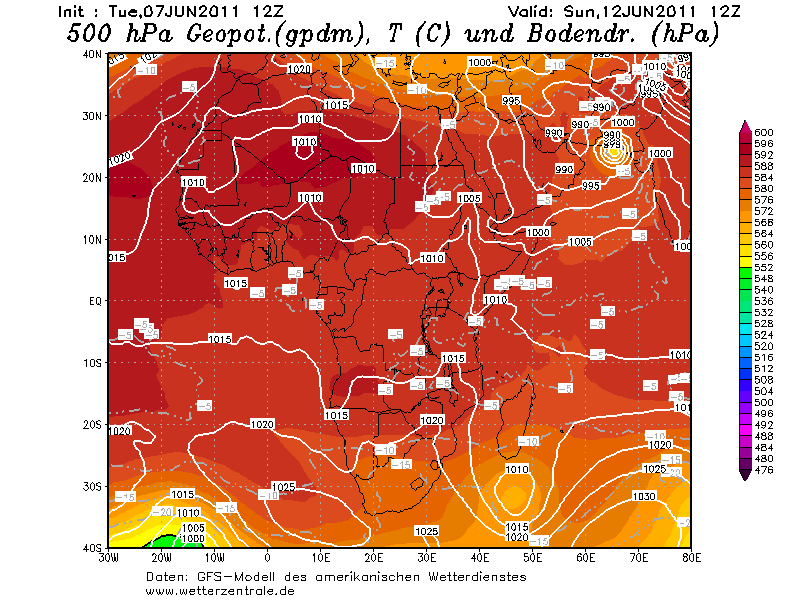
Ook in de West Pacific is een gebied wat opgehoogd is naar medium. (bij de Filipijnen).
In de Oost Pacific is de tropische depressie veranderd in Tropical storm Adrian. Deze storm zal zich verder ontwikkelen tot orkaan. Waarschijnlijk een cat 2.
quote:23 doden in Haiti
Zware regenval in Haïti heeft gisteren geleid tot overstromingen en aardverschuivingen. Daardoor zijn zeker 23 mensen om het leven gekomen. Dat hebben de autoriteiten in het Caraïbische land laten weten.
De doden vielen onder meer in het tentenkamp bij het ingestorte presidentiële paleis in de hoofdstad Port-au-Prince. Daar wonen nog altijd veel mensen die bij de zware aardbeving van januari vorig jaar dakloos zijn geraakt. Ook in de luxewijk Petionville zijn veel mensen omgekomen.
Het noodweer wordt veroorzaakt door een lagedrukgebied boven de Caraïbische Zee. Dat kan ook overstromingen en aardverschuivingen veroorzaken in de Dominicaanse Republiek, Jamaica en Cuba, aldus het Amerikaanse orkaancentrum NHC. (anp/adv)
08/06/11 07u27
"...at least some of our tools suggest that it could consolidate into a significant tropical low."
A broad area of disturbed weather over the Arabian Sea could give rise to a tropical cyclone by the end of the week.
On Wednesday, satellite pictures of the Arabian Sea showed a large swath of clouds, some having strong thunderstorms, over the open Arabian Sea between western India and Oman, in eastern Arabia.

Satellite image of Arabian Sea shows disturbed weather as of 1300 UTC Wednesday, June 8 (credit: India Meteorology Department).
This tropical weather system has remained loosely organized since late last week, even though at least some of our tools suggest that it could consolidate into a significant tropical low.
An area to watch is a few hundred miles west of Mumbai, India, within 36 to 48 hours.
If a cyclone fails to form, instead, typically unsettled weather that often marks the onset of the rainy South West Monsoon on the Indian Subcontinent is likely.
This would imply continued northward spread of showers and thunderstorms, some with torrential bursts of rain, across much of central and northeastern India during the next several days.
Strong tropical cyclones have sometimes arisen over the Arabian Sea during early June, Super Cyclonic Storm Gonu of 2007 being the ultimate example.
Signs as of Wednesday were still unclear as to whether the present disturbed area will grow into a potentially destructive storm.
Accuweather
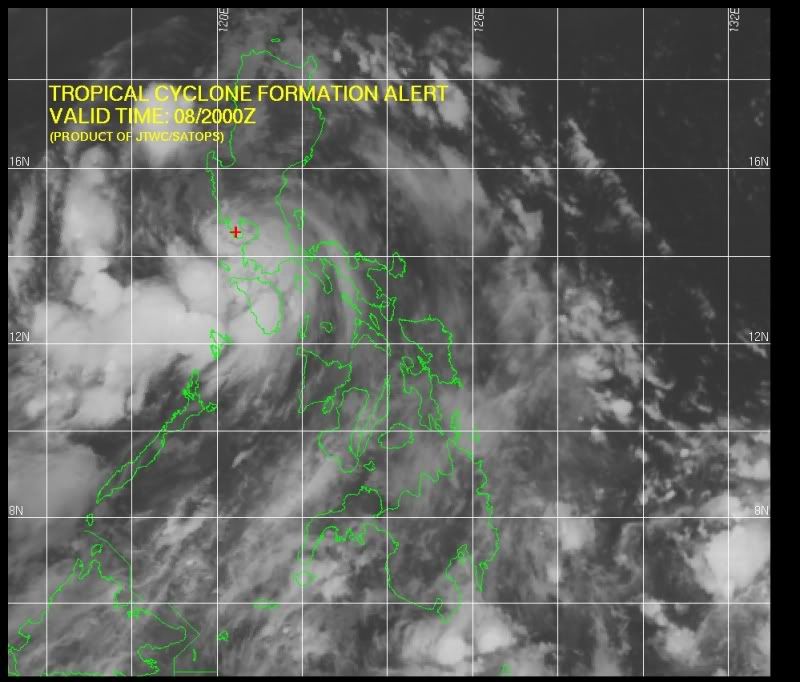

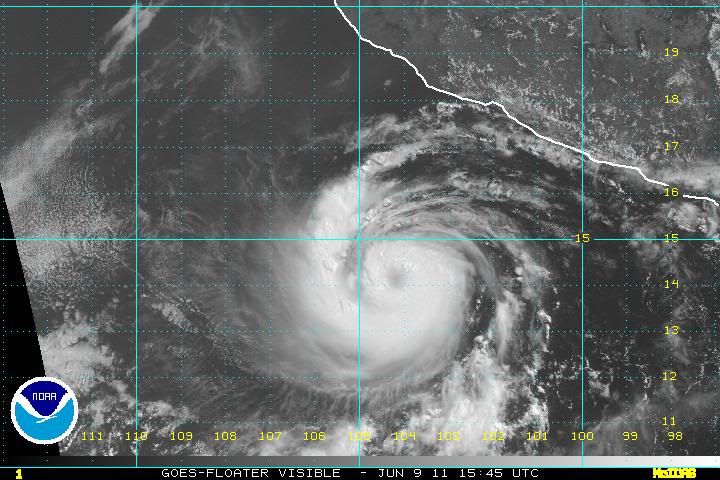
quote:Adrian Becomes Category 3 Hurricane
Satellite image of Hurricane Adrian taken early this morning shows signs of further strengthening.
Tropical Storm Adrian, the first hurricane of 2011, is now a Category 3 storm in the eastern Pacific.
Adrian was upgraded to a hurricane Wednesday evening and was upgraded to Category 3 status at 8 a.m. PDT.
After organizing into the first tropical depression of the 2011 Eastern Pacific Hurricane Season on Tuesday morning, rapid strengthening continued throughout the day. The depression was named
The AccuWeather.com Hurricane Center has the latest stats on Hurricane Adrian, which is sitting southwest of Acapulco, Mexico.
Satellite images continue to show further strengthening and organization.
"The rapid strengthening occurred due to very little wind shear in the area. This is allowed showers and thunderstorms to blow up and wrap around the tropical storm's center," said AccuWeather.com Expert Senior Meteorologist Bob Smerbeck.
According to AccuWeather.com Hurricane Expert Dan Kottlowski, "The hurricane is expected to continue on a northwest track through the eastern Pacific over the next few days, keeping the system away from Mexico."
"s Adrian continues on this course, it will eventual wander over much cooler waters, which will cause the storm to weaken," Kottlowski added.
Battering surf will affect the coastline. There could be some beach erosion and minor coastal flooding with the storm passing a couple hundred miles away from the coast.
Depending on how closely Adrian hugs the Mexico Coast as it shifts northwest, some outer bands of rain and thunderstorms as well as gusty winds could also lash westernmost Mexico in the coming days.
There are a couple of computer models that are still indicating a track farther to the north, which would take the system toward Mexico. These models are showing the storm approaching Mexico somewhere between Jalisco and Michoacan or northern Guerro.
The northern track would mean more impact as far as heavy rain, damaging winds, rough surf and storm surge goes. There would even be the threat of violent thunderstorms and tornadoes to the north and east of the storm's center at landfall if this scenario were to play out.
People who live along the west coast of Mexico should continue to monitor the progress of the storm. Keep checking back for the latest updates on AccuWeather.com.
quote:Tropical Depression Douses Philippines
Torrential rain triggered flooding in parts of the Philippines as a tropical depression spun up nearby.
According to the Straits Times of Singapore, at least three people have been killed by floods following days of heavy rain as of Thursday. Nearly 200,000 people have been adversely affected, as schools have shut and traffic was disrupted.
Two teenagers died in North Cotabato province, the Times said. North Cotabato is on the southern island of Mindanao.
In Manila, there were school closings and flight cancelations Thursday.
Weather data accessed by AccuWeather.com show that rainfall in and about Manila was 4 to at least 8 inches within 24 to 36 hours as of Thursday. June, which marks the start of the rainy season in Manila, has about 10 inches of rain through the month, on average, in the Philippine capital city.
Meanwhile, the tropical depression, designated TD 05W (Five) by the Joint Typhoon Warning Center, was drifting northwestward off western Luzon Island Thursday. TD Five could become a tropical storm prior to making landfall in southeastern China before the end of the week.
Joint Typhoon Warning Center Image shows TD Five near Luzon Island, Philippines, June 9, 2011.
quote:
Ik heb de inhoud van de post naar Weeralarm V.S. # 9 Extreem weer - 3e nacht tornado's? gekopieerdquote:

bron: http://www.nnvl.noaa.gov/(...)ID=754&MediaTypeID=1quote:Hurricane Adrian is a Category 3 hurricane with sustained winds of 115 knots off the west coast of Mexico. Conditions are favorable for further strengthening in the next 24 hours before the storm begins to be affected by stable air and cooler waters. Adrian is moving west northwest and should pose no problems for land. This image was taken by GOES East on June 9, 2011 at 1345Z.
De windsnelheid gaat nog iets oplopen tot zo'n 231 km/uur.
De orkaan beweegt zich voort met een snelheid van 14 km/uur en heeft een minimale luchtdruk van 946 mb.
Het lijkt erop dat Adrian geen bedreiging gaat vormen voor land.
quote:Annular Adrian becomes the first major hurricane of the Eastern Pacific hurricane season
Hurricane Adrian put on an impressive bout of rapid intensification Thursday, intensifying into the season's first major hurricane in the Eastern Pacific. Adrian is the globe's 6th Category 4 or stronger tropical cyclone of the year. Adrian is expected to remain far enough offshore the coast of Mexico to not pose a threat to that country. Gradual weakening is likely through the weekend, since Adrian will be tracking over cooler ocean waters. Adrian's decay will be slower than usual for a hurricane, since it has become what is called an annular hurricane. Annular hurricanes feature a large eye surrounded by a very thick eyewall, with no spiral rain bands. The very thick eyewall makes annular hurricanes resistant to weakening due to wind shear, dry air, or cool waters. Annular hurricanes are rare; only 3% of all Eastern Pacific tropical cyclones become annular, and 1% of all Atlantic ones.
In Shantou, het zuiden van China's provincie Guangdong, 11 juni 2011 is Sarika aan land gekomen. Het is de derde tropische storm van dit seizoen in deze regio en het systeem landde als eerste systeem in het zuiden van China in de provincie Guangdong zaterdagmorgen. De tropische storm trekt over het Haojiang District, waarin Shantou City ligt.
Om 5:45, was de windsnelheid 72 km per uur nabij het centrum, aldus het provinciaal meteorologisch station. Terwijl de tropische storm naar het noorden trekt zal zij naar verwachting zware regenval en stormachtige wind brengen in de steden Shantou, Meizhou, Jieyang en Chaozhou.
bron
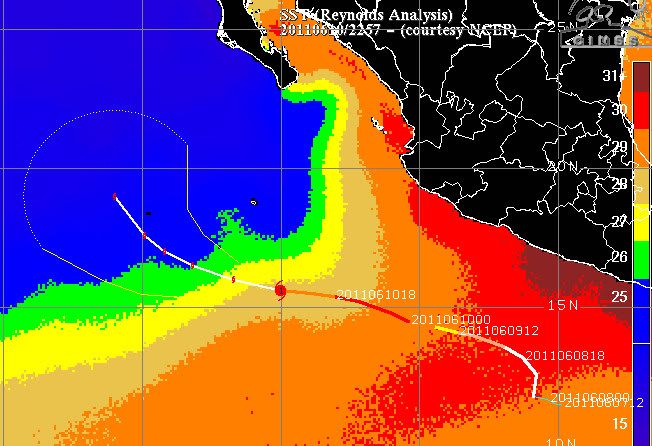
Op onderstaande foto lijkt een oog zichtbaar en is draaiing in het systeem te zien.

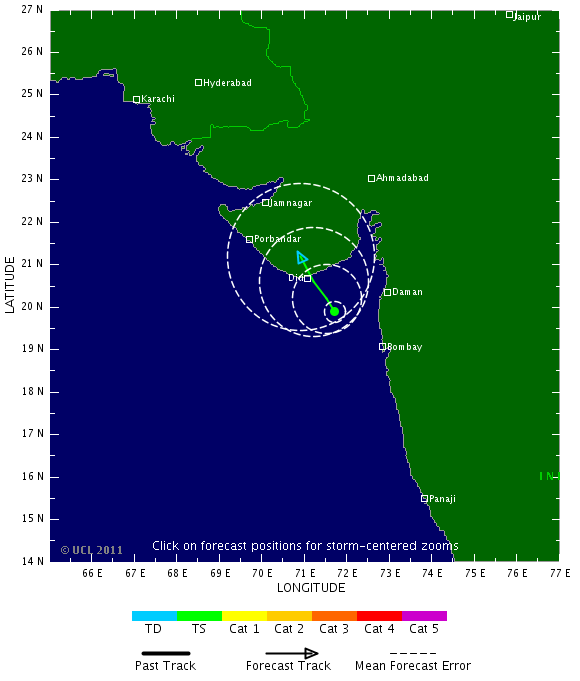
Op de schaal van beaufort is het nu hooguit een windkracht 7. Dit systeem trekt nog langs de westkust en brengt nog veel regen met zich mee
quote:Monsoon Rain to Continue Across India
Vehicles and pedestrians find their way through a waterlogged street as it rains in Mumbai, India, Saturday, June 11, 2011. Heavy rains continued to lash the city for the third consecutive day Saturday, causing floods in several parts of the city. (AP Photo/Rajanish Kakade)
Monsoon moisture will continue to produce localized heavy rain across western India over the next few days.
Aided by the short-lived Tropical Cyclone 01A, localized rain amounts of 3-5 inches (75-125 mm) occurred across northwestern India since Friday.
In the heavily populated city of Mumbai, 1.18 inches (29.9 mm) of rain fell between 8:30 a.m. and 2:30 p.m. on Saturday (local time), while up to 2.63 inches (66.7 mm) of rain fell in the western suburbs.
The heavy rain resulted in standing water on roadways and on some rail lines. Officials also reported numerous down trees across the area.
While the cyclone has dissipated, the remnant swirl will continue to draw very moist, tropical air inland over western India over the next few days.
As is typical for June, daily rainfall amounts of 3-5 inches will occur across western India, while local amounts may near 8 inches (200 mm) in a few locations in the more intense cloud bursts.
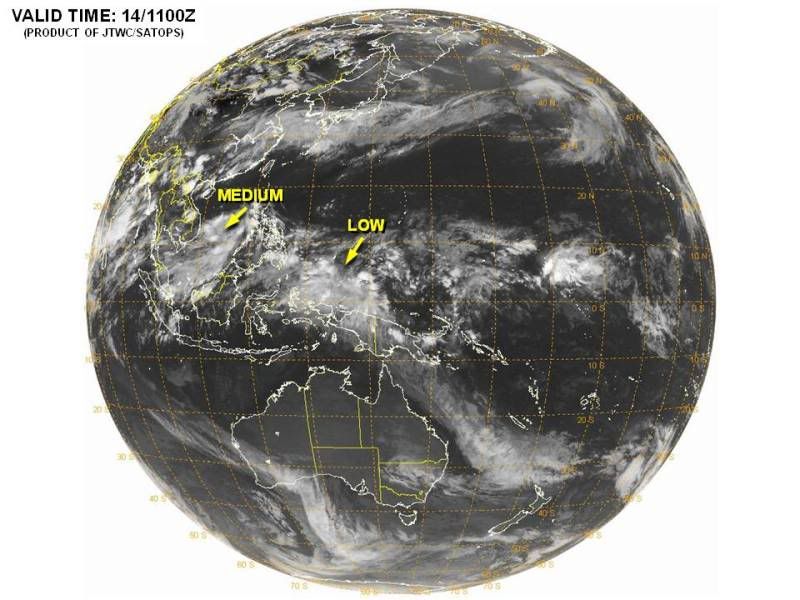
GFS laat een flink windveld langs de Filipijnen gaan.
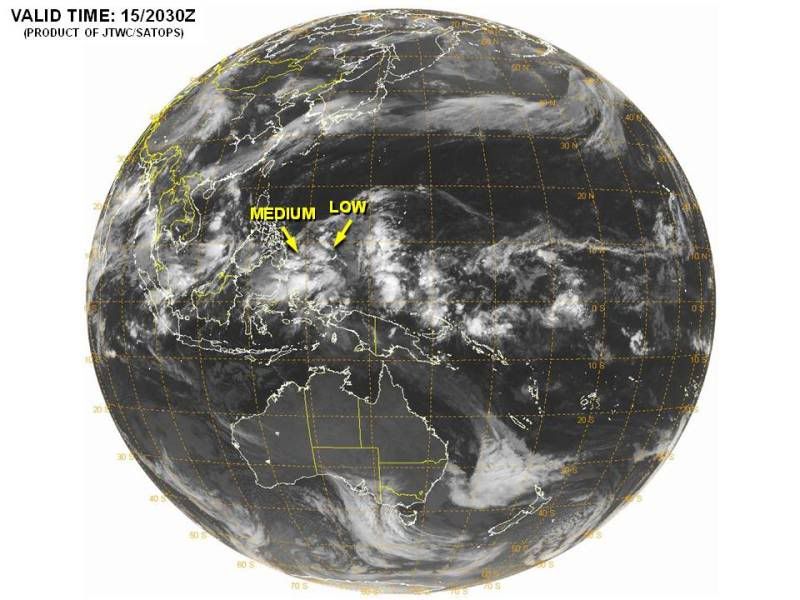
Heb de oude topics even aan de reeks toegevoegdquote:Op woensdag 15 juni 2011 23:47 schreef PiRANiA het volgende:
Dit topic is verreekst. Bij een nieuw topic worden volgers meegenomen.
Niet altijd even handig. Ik heb ongeveer 50 topics van de xfactor in mijn myat, waarin ik 1 x heb gepost.quote:Op woensdag 15 juni 2011 23:47 schreef PiRANiA het volgende:
Dit topic is verreekst. Bij een nieuw topic worden volgers meegenomen.


quote:Watching the Eastern Pacific for Tropical Development
"Flash flooding will be possible with these tropical downpours."
The current Infrared satellite imagery courtesy the National Hurricane Center shows a disorganized area of low pressure near the Gulf of Tehuantepac.
The tropical Eastern Pacific is beginning to heat up as an area of low pressure off the coast is becoming better organized.
The area of low pressure is located several hundred miles south of the Gulf of Tehuantepac at the present time.
The latest satellite imagery shows that showers and thunderstorms associated with the system remain disorganized.
However, environmental conditions are currently somewhat favorable for development.
Water temperatures off the southern coast of Mexico are close to 30 degrees celsius or 86 degrees fahrenheit, which is plenty warm for sustaining a tropical system.
The amount of wind shear or change in the winds as you go up in the atmosphere isn't all that strong in the vicinity of the area of low pressure either.
AccuWeather.com meteorologists are forecasting the feature to continue to track toward the northwest the next couple of days, generally paralleling the western coast of Mexico.
Regardless of development, locally drenching showers and thunderstorms will affect coastal locations into early next week. Flash flooding will be possible with these tropical downpours. Residents are urged to turn around and not drive through flooded waters as you never know how deep the water is.
Cities such as Acapulco, Zihuatanejo, and eventually Manzanillo can expect locally flooding downpours as showers and thunderstorms move onshore.
Should the feature strengthen into an organized tropical system, strong wind gusts will become possible, especially with the center of the system being relatively close to the coast.
Residents of the western coast of Mexico should pay attention to this feature and stay tuned to local media outlets for potential tropical watches or warnings should the system develop further.
Volgens onderstaande kaartje gaat deze dicht langs de kust als een categorie 1.
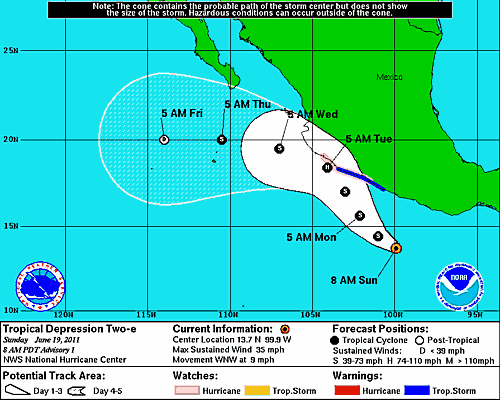
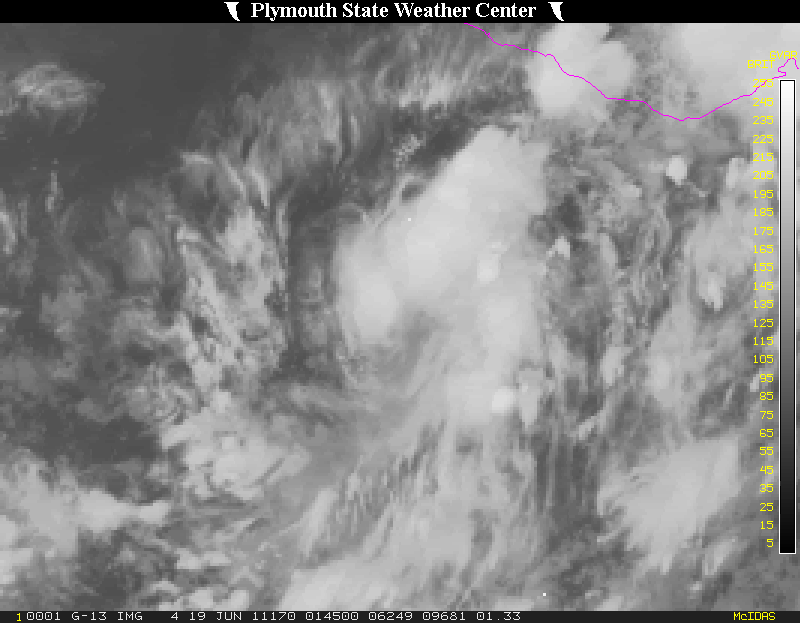

The current Infrared satellite imagery courtesy the National Hurricane Center shows Tropical Storm Beatriz located south of Acapulco.
"Satellite data over the last 12 hours has shown a dramatic increase in thunderstorm activity..."
The tropical Eastern Pacific is heating up as an area of low pressure located about 250 miles south of Acapulco, Mexico has strengthened into Tropical Storm Beatriz Sunday Afternoon.
Satellite data over the last 12 hours has shown a dramatic increase in thunderstorm activity and a gradual organization around the center of the storm.
Water temperatures off the southern coast of Mexico are close to 30 degrees celsius or 86 degrees fahrenheit, which is plenty warm for sustaining a tropical system.
Another variable supportive of development is the amount of wind shear present or "change in the wind direction and speed as you go up in the atmosphere". Wind shear values in the vicinity of the feature are light at the moment and forecasts are for them to stay supportive of further organization.
AccuWeather.com meteorologists are forecasting Beatriz to continue to track toward the northwest the next couple of days, generally paralleling the western coast of Mexico.

The system could strengthen into a hurricane by Tuesday morning not far off the west-central coast of Mexico.
For that reason, a hurricane watch is in effect for the coast of Mexico from Zihuatanejo westward to Manzanillo and a tropical storm warning is in effect for the coast of Mexico from Tecpan De Galeana westward to Punta San Telmo.
Locally drenching showers and thunderstorms will affect coastal locations into early next week. Flash flooding will be possible with these tropical downpours. Residents are urged to turn around and not drive through flooded waters as you never know how deep the water is.
Cities such as Acapulco, Zihuatanejo, and eventually Manzanillo can expect locally flooding downpours as bands of showers and thunderstorms move onshore.
Along with the torrential downpours, strong wind gusts will become likely as the system strengthens and parallels the coastline.
Residents of the western coast of Mexico should pay attention to this feature and stay tuned to local media outlets for additional tropical watches or warnings.
Bron: Accuweather

De route van Beatriz gaat over water dat rond de 30 graden ligt. Dichter bij de kust komt ze zelfs in water warmer dan 30 graden terecht.

Een aantal modellen laten de storm aan land gaan bij Mexico.
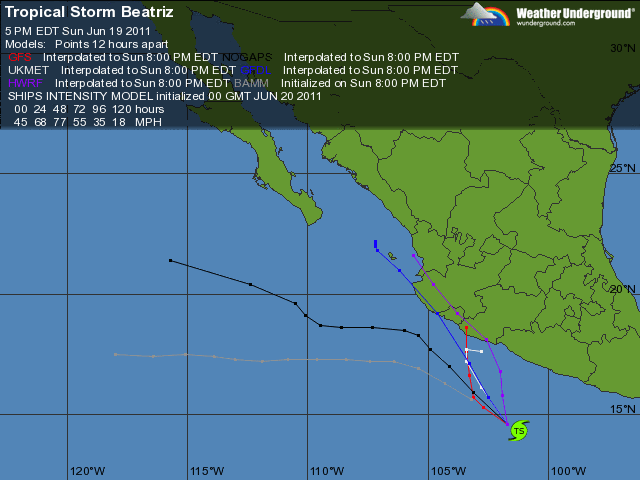
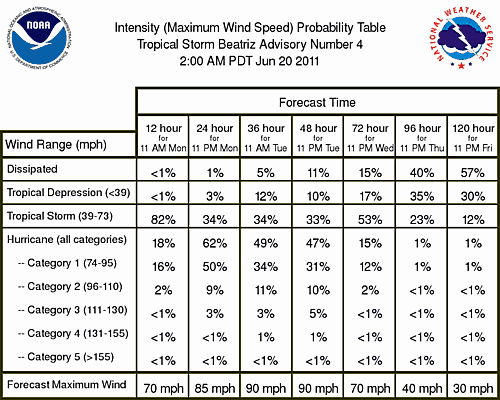
Voor een deel van de westkust is een hurricane warning afgegeven.
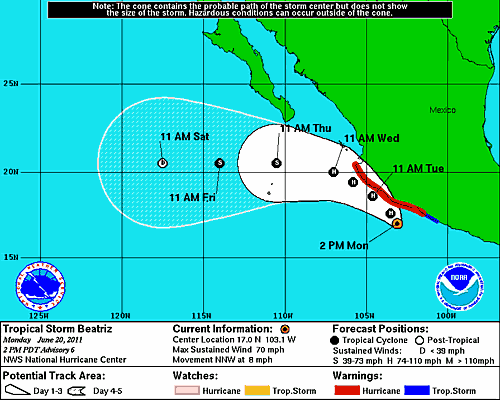
De kerndruk is teruggelopen naar 977mb.
De orkaan scheert precies langs de westkust van Mexico en zal vervolgens afbuigen richting het westen.
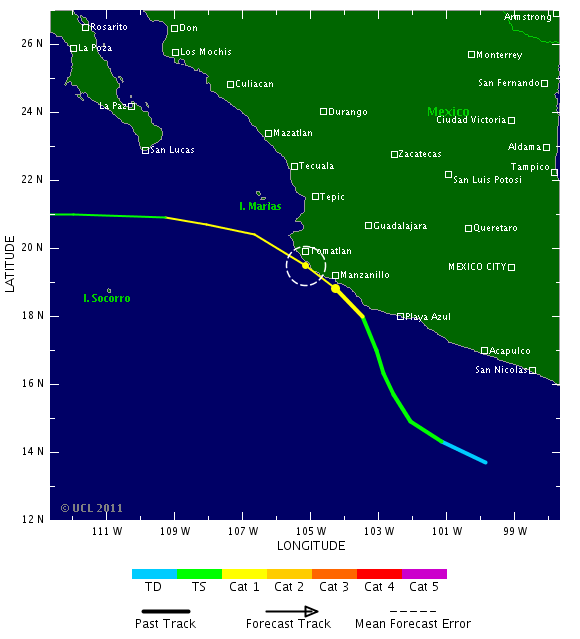
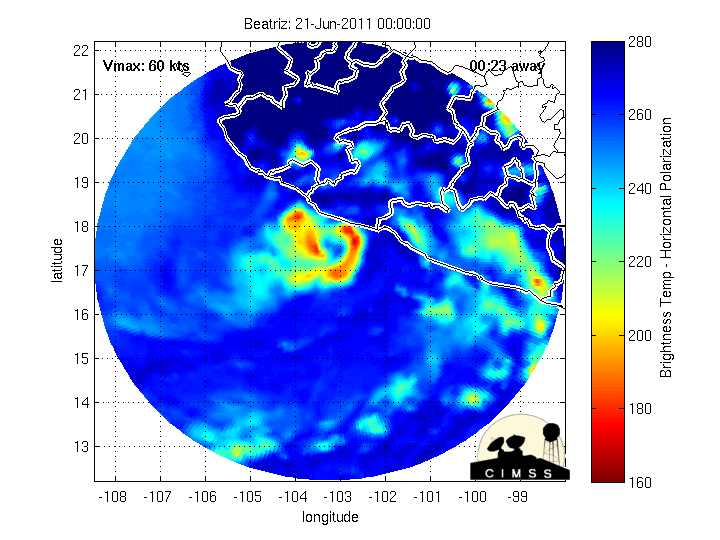
Lijkt apart inderdaad. Het oog komt net een (klein)stuk over het land.quote:Op dinsdag 21 juni 2011 21:49 schreef SpeedyGJ het volgende:
Die volgt ook zowaar de hele strookbizar om dat te zien.
Inmiddels vier doden aldus het nieuws.quote:Beatriz kills 3 in Acapulco
The second Pacific hurricane of 2011 brought high winds and heavy rains to beach resorts from Zihuatanejo to Cabo Corrientes, forcing thousands of tourists to hole up in their hotels as it uprooted trees and flooded roads.
In Acapulco, the main port on Mexico's Pacific coast and a popular tourist spot, three members of the same family drowned after falling into a septic tank while trying to rescue two women, public safety officials said.
Another person was reported missing and dozens of homes were seriously damaged. "Undoubtedly, Acapulco was the hardest hit," said Guerrero state public safety spokesman Ramon Almonte.
Top winds of 80 miles per hour died down by Tuesday afternoon to 60 miles per hour and Beatriz was forecast to track into the Pacific and fizzle out.
"There are no coastal watches or warnings in effect," the US National Hurricane Center in Miami reported.
The western state of Jalisco was also hit hard by the storm, with heavy rain recorded in Tomatlan, Cabo Corrientes, La Huerta and Puerto Vallarta, another of Mexico's biggest tourist destinations.
Red flags dotted the beaches to keep swimmers out of the high seas and local authorities urged caution when driving through mountainous interior roads due to the risk of landslides.
The 2011 storm season is expected to be worse than usual, US experts have said. Adrian, the first Pacific hurricane of the 2011 season, was downgraded to a tropical storm over a week ago and never made landfall.
Was de landfall anders dan? Volgens kaartje hierboven bleef hij aardig uit de buurt van Acapulco?
De doortocht van de tropische storm Haima in het noorden van Vietnam heeft aan minstens zeven mensen het leven gekost. Vier anderen worden nog steeds vermist. Dat melden de autoriteiten.
Onder de dodelijke slachtoffers bevonden zich een zwangere vrouw, drie kinderen en een visser. De acht maanden zwangere vrouw kwam om het leven door een vallende boom in de havenstad Hai Phong. De twee kinderen van 4 en 9 jaar oud kwamen door de sterke wind in de rivier Nghe An terecht. In de provincie Yen Bai werden vier vissers verrast door een vloedgolf. Eén lichaam werd al teruggevonden. (dpa/svm)
hln
Het is een vrij groot systeem. Nu te vergelijken met net een windkracht 10(beaufort) waarbij windstoten voorkomen tot 120 km/uur.
Meari lijkt nog in kracht toe te nemen tot een categorie 1 en is op weg naar zuid en noord Korea.
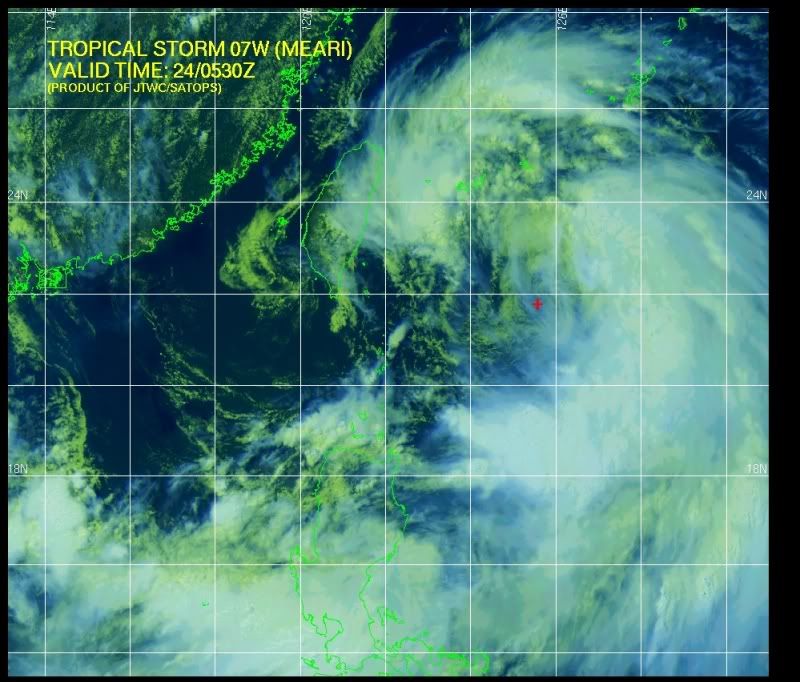
Op onderstaande kaartje is te zien dat de storm nog over warm water trekt, maar vervolgens in steeds kouder water terecht komt. Hierdoor zal de kracht afnemen.
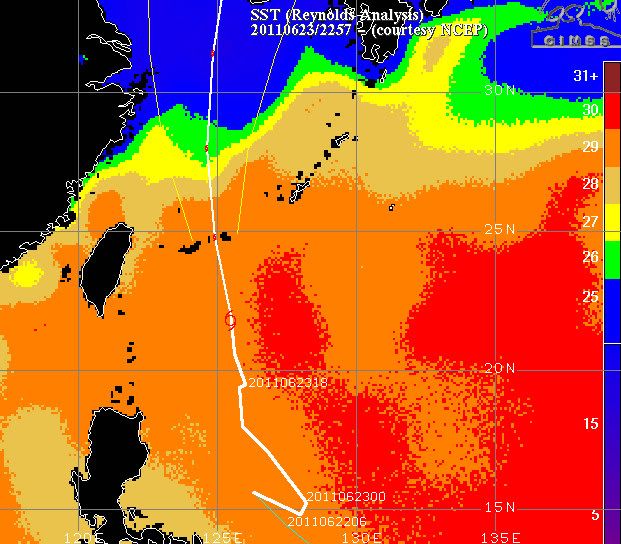
Op de Filipijnen werden bijna 50.000 mensen geëvacueerd wegens overstromingen na de doortocht van de tropische storm Meari.
In de hoofdstad Manilla verlieten meer dan 3.200 mensen hun huizen terwijl talloze straten onder water stonden. De snelle evacuaties in de hoofdstad hebben ervoor gezorgd dat daar geen dodelijke slachtoffers te betreuren zijn, zo luidt het.
Op het schiereiland Bicol, ten zuidoosten van Manilla, worden echter 11 mensen, onder wie 10 vissers, nog steeds vermist. Meer dan 42.000 geëvacueerden werden ondergebracht in opvangcentra op het schiereiland. (belga/lb)
bron
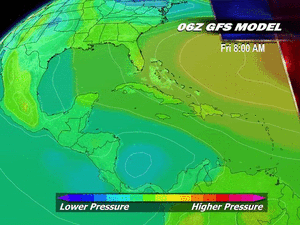
Ook het buurland Laos, kan nog rekenen op een flinke hoeveelheid neerslag.
In Vietnamese media wordt nu gesproken over 10 doden en 80 gewonden. Duizenden huizen zijn beschadigd.
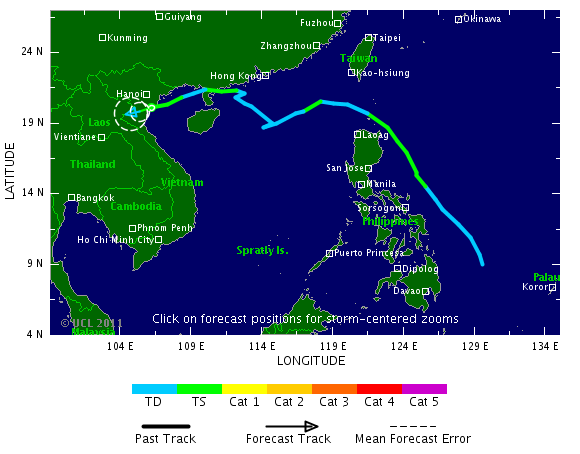
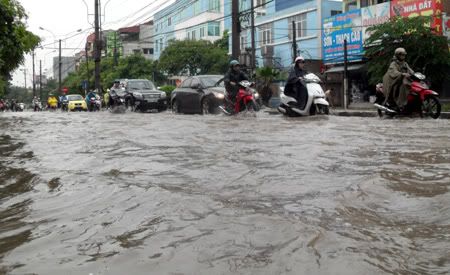
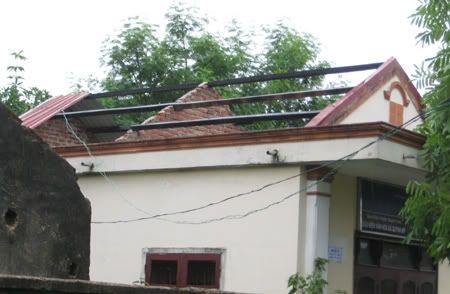
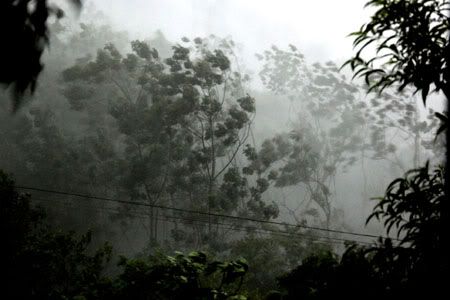
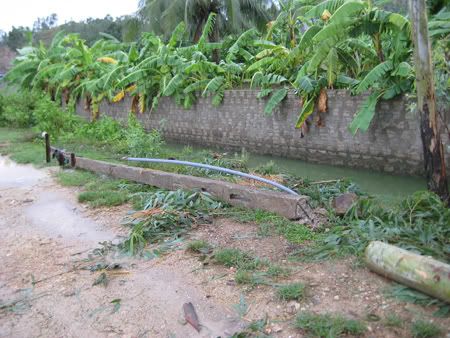
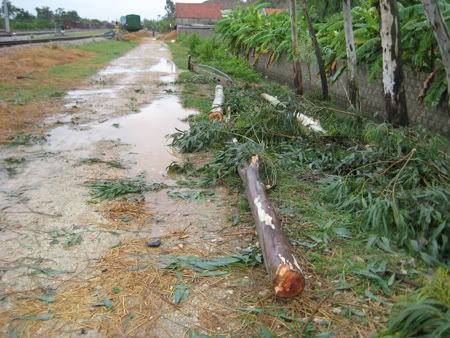
Rijstvelden in Vietnam staan onder water.
De storm kan zelfs voor overlast gaan zorgen in Thailand.

